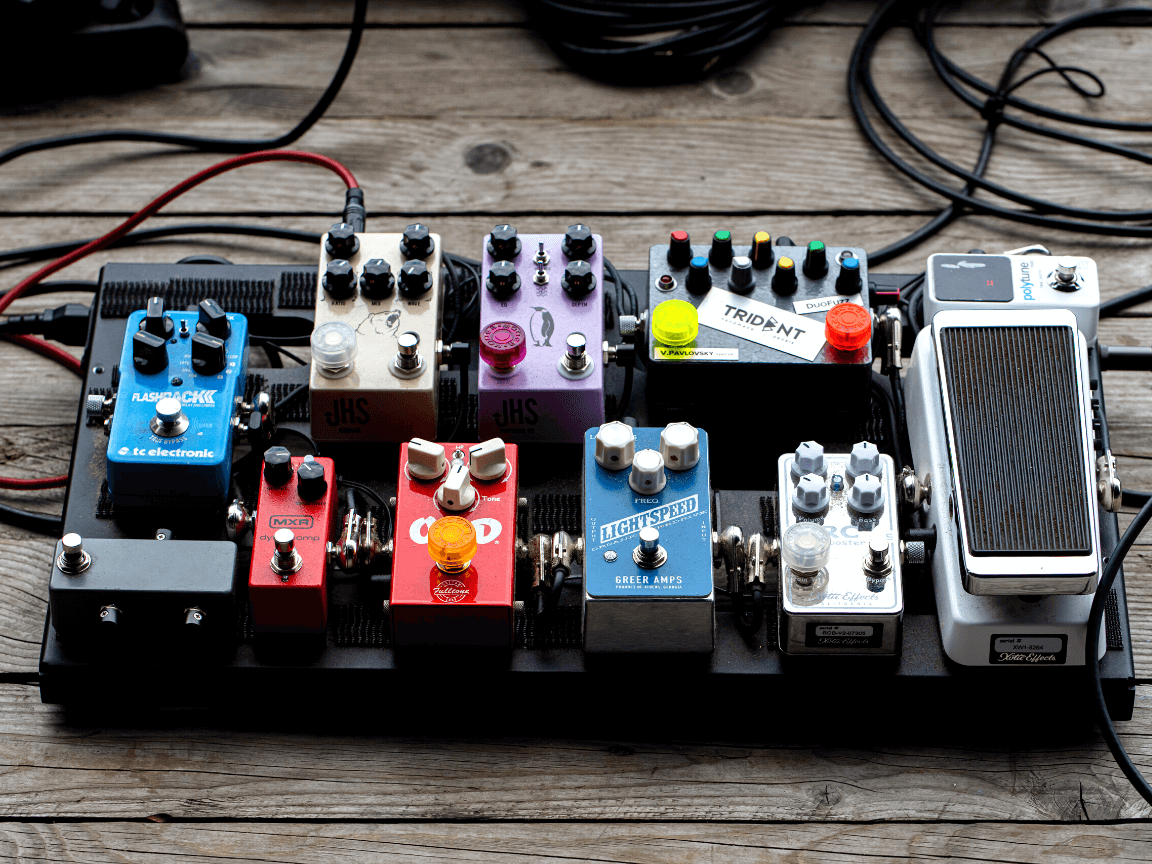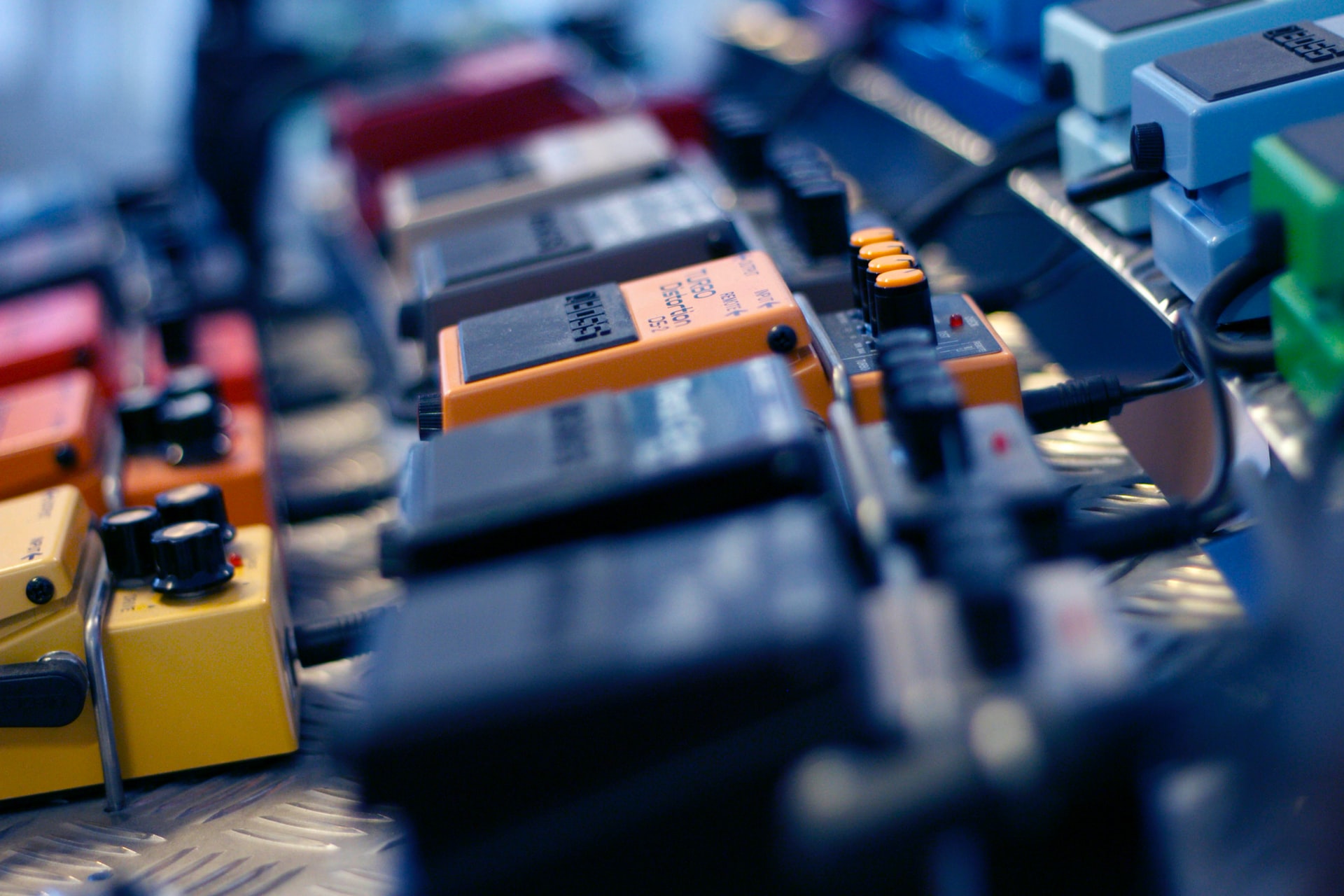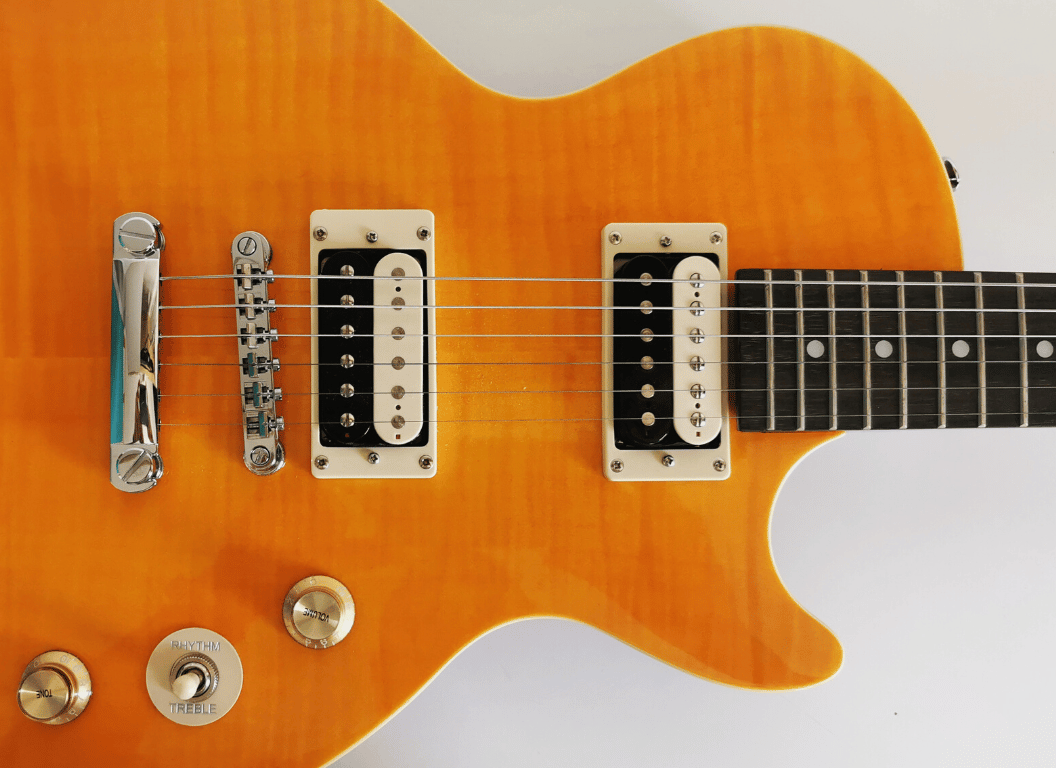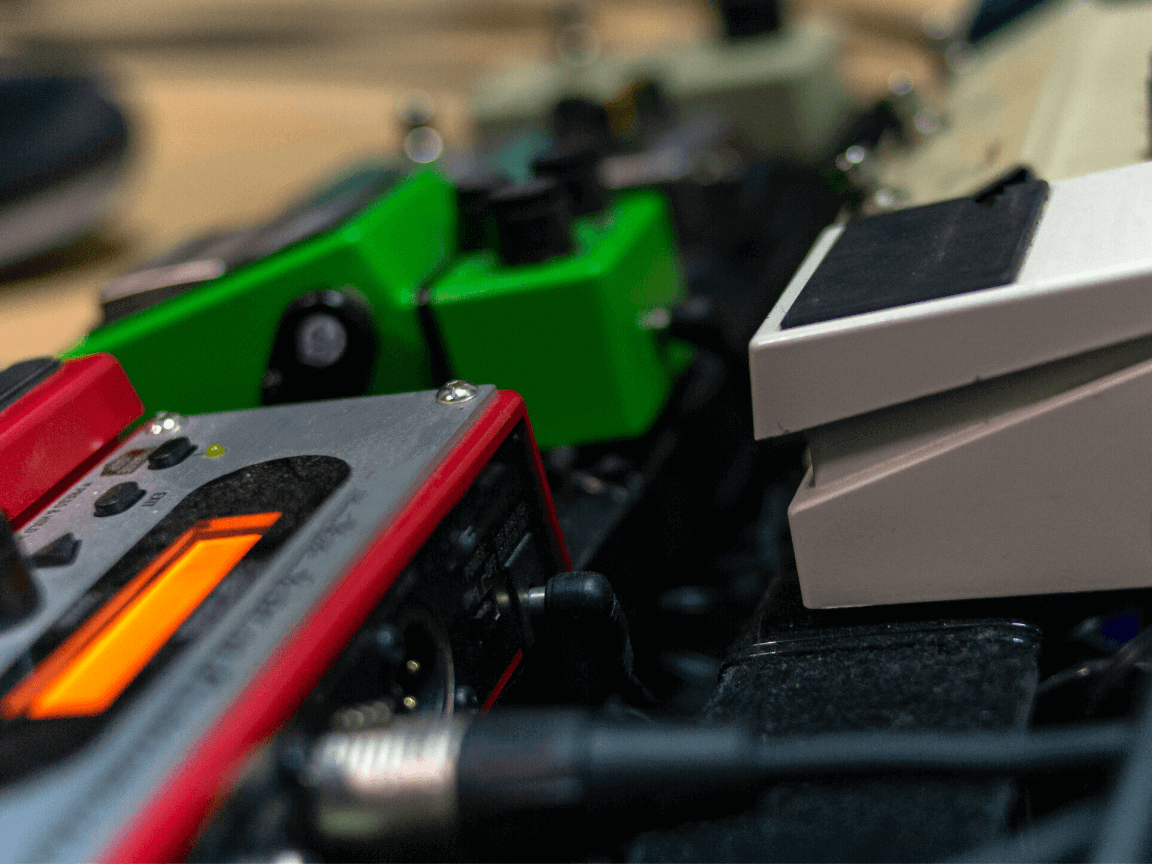Picture this, you’re jamming on your guitar and suddenly realize something is missing in your tone.
You’re not quite sure, but you believe you can sound better, and you certainly can.
Let’s explore the world of guitar effects pedals that you should own, and those that can instantly transform your sound and take your playing to new heights.
Knowing which pedals you should have in your guitar rig is crucial with so many options available out there.
In this article, we’ll guide you through the must-have options every guitarist should consider and explain why they’re important for unlocking your creative potential.
Whether you’re a seasoned player or just starting, our handpicked selection of pedals will cover all the bases, from essential tones to wild experimentation.
20 Essential Guitar Effects Pedal
Table of Contents
- 1. Overdrive pedal
- 2. Distortion pedal
- 3. Fuzz pedal
- 4. Wah pedal
- 5. Delay pedal
- 6. Reverb pedal
- 7. Chorus pedal
- 8. Flanger pedal
- 9. Phaser pedal
- 10. Tremolo pedal
- 11. Octave pedal
- 12. Compressor pedal
- 13. EQ pedal
- 14. Volume pedal
- 15. Boost pedal
- 16. Looper Pedal
- 17. Noise Gate Pedal
- 18. Tuner Pedal
- 19. Rotary Speaker Simulator Pedal
- 20. Harmonizer Pedal
- What is a guitar effects pedal?
- How do you choose the right guitar effects pedal for your playing style?
- What is a multi-effects pedal?
- What are some popular brands of guitar effects pedals?
1. Overdrive pedal
An overdrive pedal is a type of guitar effects pedal that simulates the sound of an overdriven tube amplifier.
When a guitar signal passes through an overdrive pedal, the pedal adds additional gain or distortion to the signal, creating a warm and dynamic sound that is highly sought after by guitarists.
Overdrive pedals are crucial for guitarists looking to achieve a classic, vintage sound.
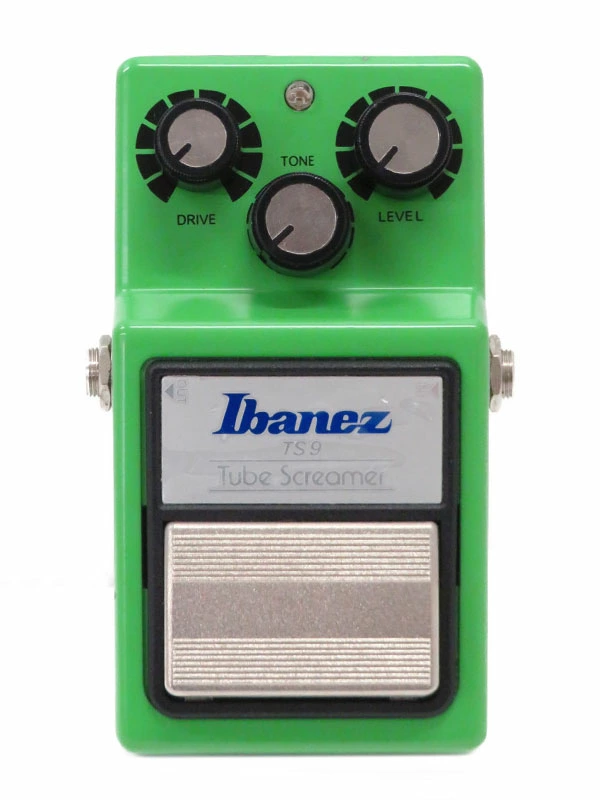
Overdriven tube amplifiers are highly valued for their warmth, dynamic range, and sustain. However, they are also incredibly loud and expensive.
Overdrive pedals allow guitarists to achieve the same sound without cramming their amplifier to high volumes or spending thousands of dollars on vintage gear. They also are highly versatile.
They can subtly boost a clean tone or be cranked up to create a thick, rich, overdrive sound.
They often add sustain and compression to lead or thicken rhythm guitar parts.
Many guitarists also use overdrive pedals to push the front end of a tube amplifier into even more distortion, creating a highly saturated sound that is perfect for heavy rock or metal.
The first overdrive pedal was the Maestro Fuzz-Tone, released in 1962.
The Fuzz-Tone was designed to simulate the sound of a broken amplifier, and it quickly became popular among guitarists looking for a more aggressive sound.
In 1965, the Electro-Harmonix Big Muff was released, a more refined version of the Fuzz-Tone; it was designed to produce a smooth, sustaining distortion, becoming a classic rock sound staple.
By the 1970s, overdrive pedals became even more popular with the rise of heavy rock and metal.
The Ibanez Tube Screamer was released in 1979 and quickly became a favorite among guitarists looking for a thick, overdriven sound.
On the other hand, the Tube Screamer was particularly popular in Japan, where guitarists like Stevie Ray Vaughan and Eric Johnson used it.
Since then, overdrive pedals have continued to evolve and improve.
As a result, countless models are now on the market, each with unique sound and features.
Top 3 overdrive pedals:
Ibanez Tube Screamer:
The Ibanez Tube Screamer is one of the most popular overdrive pedals ever.
Countless guitarists have used it, and for a good reason.
The Tube Screamer produces a warm, mid-focused overdrive perfect for blues, rock, and metal.
It also has a simple and intuitive layout, making dialing the perfect sound easy.
Fulltone OCD:
The Fulltone OCD (Obsessive Compulsive Drive) is another highly regarded overdrive pedal.
It is known for its versatility and wide range of gain and tone options.
The OCD can produce a range of sounds, from a subtle boost to a thick, crunchy overdrive.
Its unique bypass system also ensures the signal stays clean and pure.
JHS Morning Glory:
The JHS Morning Glory is a boutique overdrive pedal with a cult following among guitarists.
It produces a transparent overdrive, adding warmth and clarity to a clean tone.
Compatibility with other effects pedals:
Overdrive pedals are highly versatile and can be used in various guitar setups.
They can be used on their own, or they can be combined with other effects pedals to create unique and complex sounds.
One of the most common ways to use an overdrive pedal is in conjunction with a distortion pedal.
Many guitarists use an overdrive pedal to push the front end of a distortion pedal, creating a highly saturated sound that is perfect for heavy rock and metal.
This setup allows guitarists to control the level of gain and distortion with the overdrive pedal while the distortion pedal adds additional harmonic content and compression.
Overdrive pedals can also be combined with other effects like delay, reverb, and chorus.
When combined with delay or reverb, an overdrive pedal can create a highly atmospheric sound with a long, sustaining trail.
An overdrive pedal can add depth and richness to the sound with a chorus pedal.
2. Distortion pedal
An overdrive pedal is an effects pedal used in electric guitar rigs to produce a distorted sound.
It works by pushing the preamp section of a guitar amplifier into overdrive, creating a warm and compressed sound with mild distortion.
These pedals can be used in various musical genres, from blues and rock to metal and punk.

Distortion pedals are essential for guitarists who want to add an edge to their sound.
Distortion is clipping where the signal is amplified beyond its maximum level, causing it to “clip” or distort.
This results in a rough, gritty, aggressive sound perfect for rock and metal music.
Distortion pedals can also add sustain and depth to guitar notes, making them sound fuller and more powerful.
In addition, they can create a range of tones, from mild overdrive to full-on metal distortion.
The first distortion pedals were invented in the 1960s by guitarists who wanted to push the boundaries of their sound.
One of the earliest examples is the Maestro Fuzz-Tone, which Keith Richards of the Rolling Stones used on their hit song “Satisfaction.”
In the 1970s, distortion pedals became more popular with the introduction of the Big Muff and the ProCo Rat.
These pedals were used by guitarists like David Gilmour of Pink Floyd and Kurt Cobain of Nirvana to create their signature sounds.
In the 1980s and 1990s, distortion pedals became even more diverse with the introduction of digital processing and multi-effects units.
Today, countless distortion pedals with unique sounds and features are available.
Top 3 distortion pedals:
Boss DS-1 Distortion Pedal:
The Boss DS-1 is among the most popular. It has a classic, gritty sound that is perfect for rock and metal music.
The DS-1 has a simple, three-knob interface that allows you to adjust the level, tone, and distortion.
It is also affordable, making it an excellent choice for beginners and professionals.
ProCo Rat Distortion Pedal:
The ProCo Rat is another classic distortion pedal used by countless guitarists.
It has a unique, gritty sound perfect for punk, grunge, and alternative rock music.
The Rat has a simple, four-knob interface that allows you to adjust the distortion, filter, volume, and tone.
It is also built like a tank, making it a reliable choice for gigging musicians.
Fulltone OCD Overdrive Pedal:
Fulltone OCD is a versatile overdrive pedal that can also be a distortion pedal.
It has a warm, natural sound perfect for blues, rock, and country music.
The OCD has a simple, three-knob interface that allows you to adjust the volume, drive, and tone.
Its high-quality construction also makes it a reliable choice for professional musicians.
Compatibilities with other effects pedals:
Distortion pedals can be used with other effects pedals to create a wide range of sounds.
For example, they can be used with delay pedals to create a spacious, atmospheric sound.
They can also be used with reverb pedals to create a lush, ambient sound.
Distortion pedals can also be used with other overdrive and boost pedals to create a more complex, layered sound.
For example, you can use a mild overdrive pedal to push the front end of a distortion pedal, creating a smoother and more saturated sound.
3. Fuzz pedal
A fuzz pedal is an electronic device commonly used by guitarists and other musicians that alters the sound of an instrument by intentionally clipping and distorting the audio signal.
This results in a warm, thick, and harmonically rich sound, often compared to a “fuzzy” or “broken” speaker.
Fuzz pedals have become essential for musicians across various genres, particularly in rock, blues, and psychedelic music.
They can provide a unique tonal character and add extra sonic dimensions to performance.
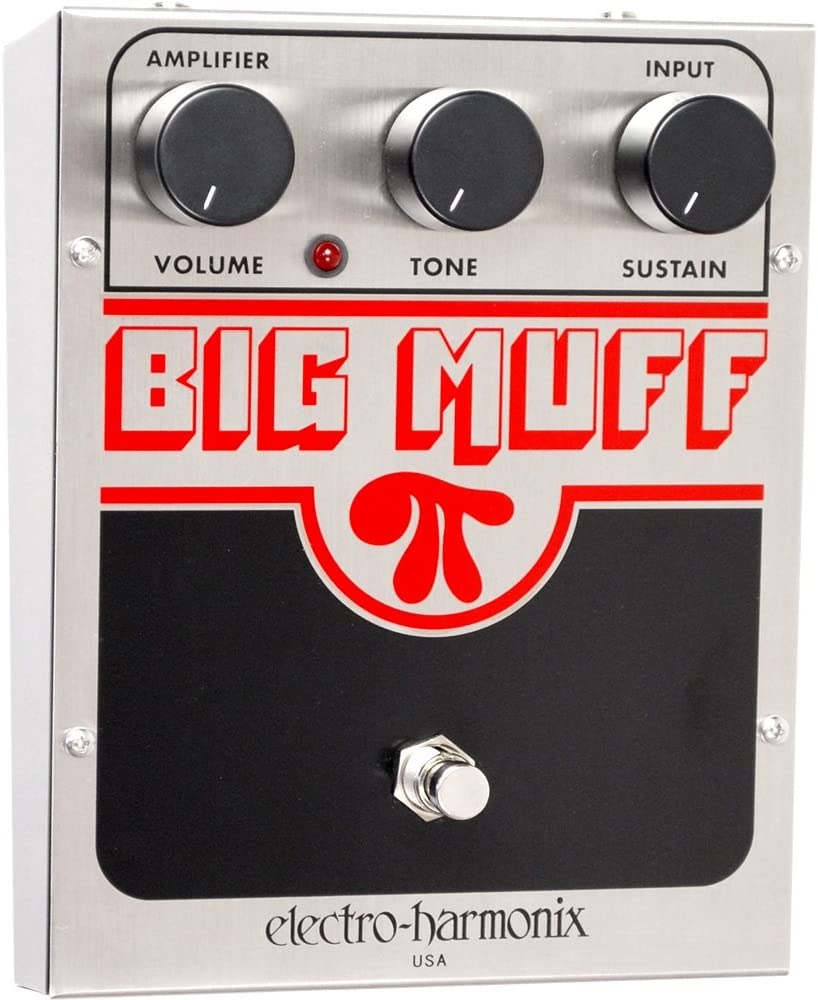
The importance of a fuzz pedal is evident in its significant impact on contemporary music.
This relatively simple device has transformed the landscape of electric guitar tones, helping artists create a wide array of expressive and distinctive sounds.
The fuzz pedal’s ability to produce aggressive, saturated, and sustained distortion has been key in developing various music genres, including rock, blues, and psychedelic music.
Additionally, it has inspired countless musicians and bands to experiment with different textures and sonic possibilities, allowing them to push the boundaries of their creativity.
The history of the fuzz pedal can be traced back to the early 1960s when recording engineers and musicians were searching for new ways to create unique and powerful electric guitar tones.
The first fuzz effect was accidentally discovered in 1961 during a recording session with American musician Marty Robbins.
His guitarist, Grady Martin, used a faulty preamplifier that produced a distorted sound, subsequently becoming a significant element of the song “Don’t Worry.”
This accidental discovery led to the development of the Maestro Fuzz-Tone FZ-1, the first commercially available fuzz pedal, in 1962.
The Maestro Fuzz-Tone FZ-1 gained widespread popularity after being featured in the Rolling Stones’ 1965 hit “Satisfaction.”
The song’s iconic guitar riff, played by Keith Richards, showcased the fuzz pedal’s raw and aggressive tonal characteristics, subsequently influencing a generation of guitarists.
Since then, fuzz pedals have evolved and diversified, with numerous manufacturers creating their unique versions of the effect.
Top 3 fuzz pedals
Electro-Harmonix Big Muff Pi:
Introduced in 1969, the Big Muff Pi is a legendary fuzz pedal used by countless musicians across various genres, including Jimi Hendrix, David Gilmour, and Jack White.
The pedal is known for its distinctive, creamy fuzz tone, which offers a powerful sustain and harmonic richness.
In addition, it is often praised for its versatility, as it can create anything from a subtle, warm fuzz to massive wall-of-sound distortion.
ZVEX Effects Fuzz Factory:
Designed by renowned boutique pedal maker Zachary Vex, the Fuzz Factory is a highly tweakable and versatile fuzz pedal that allows users to shape their sound in numerous ways.
With its five control knobs, the Fuzz Factory offers various fuzz tones, from classic, vintage-style sounds to wild, oscillating feedback.
Its unique character and flexibility have made it a popular choice among experimental musicians and artists who want to explore the outer limits of fuzz.
Dunlop Fuzz Face:
The Fuzz Face is another iconic fuzz pedal legendary guitarists like Jimi Hendrix, and Eric Clapton have used.
First introduced in the mid-1960s, the Fuzz Face is known for its warm, smooth fuzz tone and simple two-knob design.
In addition, the pedal has a unique, circular enclosure, which has become one of the most recognizable shapes in the effects pedals.
Over the years, the Fuzz Face has been reissued and modified, with various versions offering different flavors of the classic fuzz tone.
Compatibilities with other effects pedals:
Fuzz pedals are often compatible with other effects pedals, allowing musicians to create diverse sounds and textures.
Combining fuzz with other effects can result in unique and captivating sonic landscapes, as each effect can accentuate and complement the characteristics of the fuzz.
A fuzz pedal with a delay effect can create lush, ambient soundscapes or add depth and dimension to solos.
In addition, the delay can emphasize the harmonic content of the fuzz, resulting in a rich, complex, powerful, and evocative sound.
The combination of fuzz and wah-wah effects is a classic, often in psychedelic and funk music.
The expressive nature of the wah effect can add a vocal-like quality to the fuzz, allowing for dynamic and interactive performances.
Notable guitarists like Jimi Hendrix and Eric Clapton have famously utilized this combination to create some of their most memorable tones.
Adding reverb to a fuzz pedal can create a sense of space and depth, making the sound feel larger and more expansive.
In addition, this combination can create atmospheric and ethereal textures, as the reverb can soften and diffuse the aggressive qualities of the fuzz.
Modulation effects, such as chorus, flanger, and phaser, can add movement and interest to a fuzz pedal’s sound.
By modulating the frequency or amplitude of the fuzz, these effects can create swirling, shifting textures that bring a unique character to the tone.
Combining fuzz with modulation effects can be particularly effective in creating psychedelic or experimental sounds.
4. Wah pedal
A Wah pedal is a type of guitar effects pedal that alters the tone and frequencies of the guitar’s output, producing a distinctive sound reminiscent of a human voice saying the word “wah.”
This effect is achieved by sweeping through the frequency spectrum, boosting and cutting certain frequencies while leaving others untouched.
The wah-wah sound is produced by rocking the pedal back and forth with the foot, which changes the filter’s frequency response.
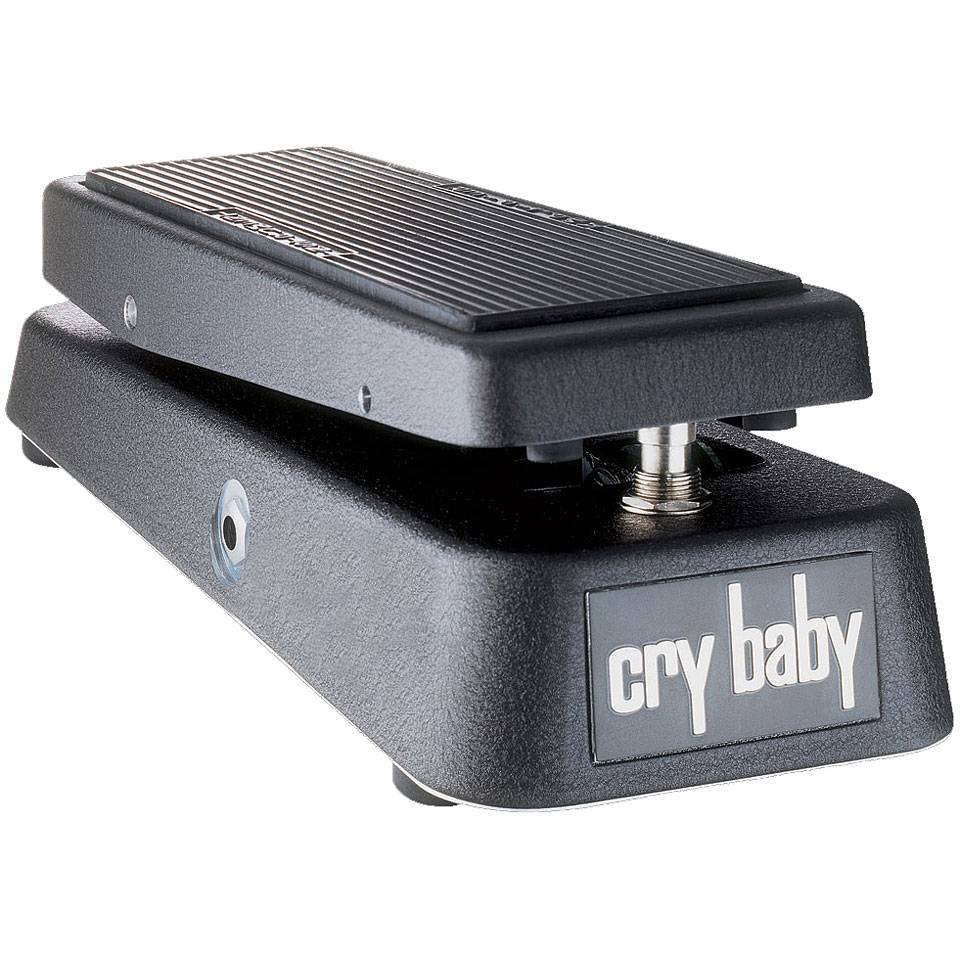
This creates a dynamic, expressive effect that has become a staple of many guitarists’ pedalboards.
The importance of a Wah pedal cannot be overstated, as it has played a significant role in shaping the sound of modern guitar playing.
Its unique tonal characteristics have made it popular for guitarists across various genres, including rock, funk, blues, and jazz.
In addition, the Wah pedal allows musicians to add expressiveness and nuance to their playing, making it an essential tool for those who wish to experiment with different sounds and textures.
Furthermore, the Wah pedal’s iconic sound has been immortalized in countless songs and performances, making it an instantly recognizable and beloved effect for both guitarists and listeners.
The history of the Wah pedal dates back to the 1960s when Bradley J. Plunkett, an engineer at the Thomas Organ Company, first conceived it.
Plunkett was tasked with designing a new type of volume control for electric guitars.
During this process, he discovered that altering the circuit’s frequency response could produce a distinctive “wah-wah” effect.
The first commercial Wah pedal, the Cry Baby, was released in 1966 by the Thomas Organ Company and quickly gained popularity among guitarists for its unique sound and expressive capabilities.
Over the years, countless legendary musicians such as Jimi Hendrix, Eric Clapton, and Eddie Van Halen have used the Wah pedal, solidifying its status as an essential piece of guitar history.
Top 3 wah pedals:
Dunlop GCB95 Cry Baby:
As the original Wah pedal, the Cry Baby is a classic choice for those seeking the quintessential wah-wah sound.
Its straightforward design and durable construction have made it a favorite among professional guitarists for decades.
In addition, the Cry Baby’s wide frequency range and expressive sweep make it an excellent choice for any guitarist looking to add a touch of vintage flair to their sound.
Vox V847A:
Another iconic Wah pedal, the Vox V847A, is based on the original design by the Thomas Organ Company and offers a vintage-inspired sound with a modern twist.
The V847A features a redesigned inductor, providing a smoother, more vocal-like sweep and true bypass circuitry for improved signal integrity.
Its sturdy construction and classic design make it popular for guitarists seeking a reliable and versatile Wah pedal.
Xotic Effects XW-1:
The Xotic Effects XW-1 is a highly customizable and versatile Wah pedal that caters to guitarists who want more control over their sound.
With its adjustable controls for bias, wah-q, treble, and bass, the XW-1 allows users to fine-tune their desired effect to suit their playing style and preferences.
The pedal’s compact size and true bypass circuitry make it an excellent choice for those with limited pedalboard real estate.
Compatibilities with other effects pedals:
Regarding compatibility with other effects pedals, the Wah pedal generally plays well with others.
However, the order in which the pedals are placed within the signal chain can significantly impact the overall sound.
As a general rule, placing the Wah pedal near the beginning of the signal chain is recommended, typically after any compression or boost pedals but before any modulation or time-based effects like chorus, delay, or reverb.
Placing the Wah pedal before these effects allows the filter to sweep through the altered frequencies, creating a more dynamic and textured sound.
Moreover, the Wah pedal can be used with other pedals to achieve even more tonal possibilities.
For example, combining the Wah pedal with a distortion or overdrive pedal can create a more aggressive and saturated sound.
Pairing it with a phaser or flanger can add more movement and depth to the tone.
Additionally, using an expression pedal with the Wah pedal can provide even more control over the sweep and frequency range, allowing for more precise and nuanced expression.
5. Delay pedal
A delay pedal is an essential effect device musicians, especially guitarists, use to create a sense of depth, space, and texture in their music.
It works by recording the input signal, temporarily storing it, and then playing it back after a specific interval.
This creates an echo-like effect, where the original sound repeats at varying intervals and volumes, depending on the settings chosen by the user.
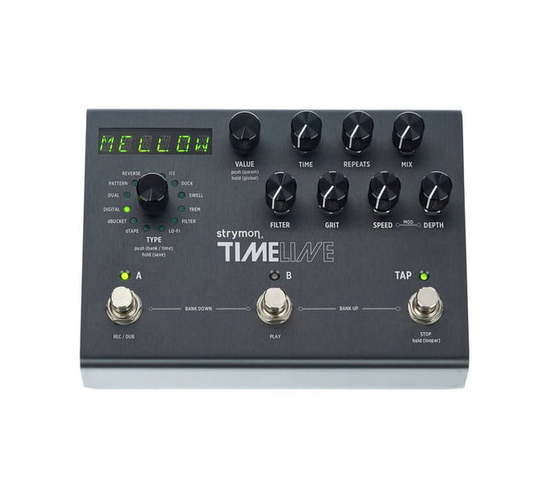
The delay pedal allows musicians to manipulate the time between repeats, the number of repeats, and the level of the delayed signal about the original signal, providing a vast range of creative possibilities.
The importance of a delay pedal in a musician’s arsenal cannot be understated.
It is an incredibly versatile tool that can add depth and dimension to a guitar sound, creating an expansive sonic landscape that enhances the overall musical experience.
For example, delay pedals can be used subtly to thicken a guitar tone, making it sound richer and more powerful, or more prominently to produce psychedelic, ambient, or experimental sounds that can be an essential part of a musician’s signature style.
Moreover, delay pedals are not just limited to guitarists; they can also be used with other instruments like keyboards, synthesizers, and vocals, expanding their creative potential even further.
The history of delay pedals dates back to the 1950s when tape-based echo machines, such as the Echoplex and Roland’s Space Echo, were introduced.
These units used magnetic tape to record and playback the input signal, creating an echo effect.
However, these early devices were bulky, expensive, and prone to mechanical issues.
In the late 1970s, with the advent of digital technology, more compact and affordable delay pedals started to emerge.
The Boss DD-2, released in 1983, was one of the first digital delay pedals and marked a significant milestone in the evolution of delay effects.
Fast forward to today, an abundance of delay pedals are available in the market, offering various features and tonal possibilities.
Top 3 delay pedals:
Strymon Timeline:
The Strymon Timeline is a powerhouse of a delay pedal, offering unparalleled control and flexibility.
It features 12 different delay types, ranging from classic analog and tape echoes to more experimental and ambient effects.
The pedal also provides extensive editing options, allowing users to fine-tune their delay sounds and save up to 200 presets.
With its crystal-clear sound quality and studio-grade processing, the Strymon Timeline is a favorite among professional musicians and recording artists.
Boss DD-500:
Boss has a long history of creating top-notch delay pedals; the DD-500 is no exception.
This versatile pedal offers 12 delay modes, including analog, tape, and shimmer effects.
It also boasts a 32-bit/96 kHz digital processing engine, ensuring top-notch sound quality.
In addition, with its intuitive interface, the DD-500 allows users to easily access and edit presets, tweak parameters, and even use an external expression pedal for real-time control.
MXR Carbon Copy:
For those who prefer a more straightforward, no-nonsense approach to delay, the MXR Carbon Copy is an excellent choice.
This analog delay pedal is revered for its warm, organic sound, which closely emulates the feel of vintage tape-based echo units.
With its simple three-knob layout (Regen, Mix, and Delay), the Carbon Copy makes it easy to dial in a wide range of delay sounds, from subtle slapback echoes to the lush, spacey ambiance.
Compatibilities with other effects pedals:
One of the great things about delay pedals is their compatibility with other effects pedals.
Delay effects can be combined with distortion, modulation, and reverb pedals to create even more diverse and exciting sonic textures.
By placing a delay pedal at different points in the signal chain, musicians can achieve amazing and expressive results.
For instance, placing a delay pedal before a distortion or overdrive pedal will also cause the repeated notes to be distorted, creating a more aggressive and chaotic sound.
Conversely, positioning the delay pedal after the distortion will result in a cleaner, more defined echo, allowing the individual repeats to be more easily distinguished.
Experimenting with the pedal order is key to finding the perfect combination that suits a musician’s taste and style.
Delay pedals can also be used with modulation effects like chorus, flanger, or phaser pedals to add depth and movement to the delayed signal.
When combined with a reverb pedal, a delay pedal can create an even more expansive and immersive sound, simulating the natural reflections of a large space or cavern.
Some delay pedals, such as the Strymon Timeline and Boss DD-500, offer built-in modulation and reverb effects, allowing for even greater creative possibilities.
6. Reverb pedal
A Reverb pedal is an electronic device that simulates the natural reverberation effect of sound waves interacting with various surfaces and spaces.
Reverb is an essential element in music production, as it helps to create depth, warmth, and a sense of space in a mix.
Guitarists and other musicians use reverb pedals to add these characteristics to their sound, making their performances more immersive and expressive.
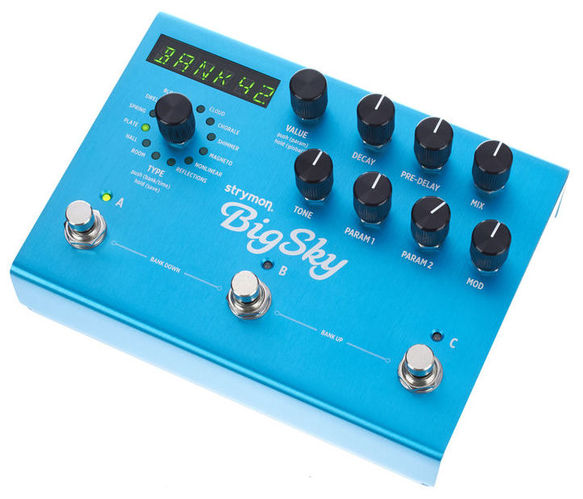
The importance of a reverb pedal cannot be overstated, as it plays a crucial role in shaping the sound and ambiance of a musical piece.
For guitarists, a reverb pedal can create a wide range of sonic textures, from subtle echoes that add depth and dimension to their playing to cavernous, ethereal soundscapes that transport listeners to otherworldly realms.
Reverb is particularly important in live performances, as it can help musicians achieve a fuller, more polished sound even in venues with poor acoustics.
Additionally, reverb is a versatile effect that can be used across various genres of music, from rock and pop to jazz and experimental.
The history of the reverb pedal dates back to the early days of electronic music production when engineers sought to recreate the natural reverberation of sound in a controlled environment.
Early reverb units were large mechanical devices that used springs, plates, or echo chambers to create the desired effect.
In the 1960s, the invention of solid-state electronics led to the development of smaller, more portable reverb units that could be integrated into guitar amplifiers or used as standalone effects processors.
The first commercially successful reverb pedal was the Electro-Harmonix Holy Grail, released in the late 1990s.
This compact, affordable pedal brought the power of studio-quality reverb to guitarists everywhere, revolutionizing how musicians approached their craft.
Since then, the market for reverb pedals has exploded, with countless manufacturers offering a dizzying array of options designed to cater to every conceivable taste and need.
Top 3 reverb pedals:
Strymon BigSky:
The Strymon BigSky is a highly regarded reverb pedal that offers an incredible range of high-quality reverb algorithms in a compact and user-friendly package.
The pedal features 12 reverb types, including classics like spring, plate, and hall, and more experimental options such as shimmer, cloud, and non-linear.
The BigSky also includes extensive controls for adjusting parameters like decay, modulation, and tone, allowing users to create virtually any reverb sound imaginable.
Eventide Space:
The Eventide Space is another top-tier reverb pedal lauded for its expansive range of sounds and unparalleled quality.
The pedal boasts 12 unique reverb algorithms, including realistic emulations of vintage hardware reverbs and innovative options like blackhole and mangled verbs.
With its intuitive interface, deep editing capabilities, and onboard presets, the Eventide Space is a powerful tool for musicians looking to push the boundaries of what reverb can do.
Boss RV-6:
The Boss RV-6 is a highly versatile and affordable reverb pedal offering a wide range of excellent sounds in a compact, easy-to-use package.
With eight different reverb modes, including standards like room, hall, and plate, and more creative options like shimmer and dynamic, the RV-6 caters to various musical styles and preferences.
Its robust build quality, simple interface, and reliable performance make it a popular choice for guitarists of all levels.
Compatibilities with other effects pedals:
Reverb pedals are generally compatible with other effects pedals and can easily be incorporated into a larger pedalboard setup.
However, it is essential to consider how the pedals are connected to achieve the desired sound.
For example, most musicians place reverb pedals towards the end of the signal chain, after gain-based effects like overdrive and distortion and modulation effects like chorus and phaser.
This arrangement ensures that the reverb is applied to the entire signal, creating a more natural and cohesive effect.
Additionally, some reverb pedals feature built-in effects loops, which allow users to integrate other effects pedals directly into the reverb signal path.
This feature can be particularly useful for musicians who want to create more complex and experimental soundscapes.
It enables them to apply additional effects, such as delay or modulation, exclusively to the wet (reverberated) signal.
7. Chorus pedal
A chorus pedal is an electronic device or stompbox used by musicians, primarily guitarists, to create a lush, shimmering sound effect by simulating the slight variations in pitch and timing that occur naturally when multiple instruments or voices play or sing the same musical part.
The pedal achieves this effect by splitting the input signal into multiple copies, slightly modulating the pitch and timing of the duplicates, and then recombining them with the original signal.
The resulting sound is a rich, full, and ethereal tone that enhances the depth and character of the instrument.
The importance of a chorus pedal is multifaceted, as it offers a broad range of applications and benefits for musicians.
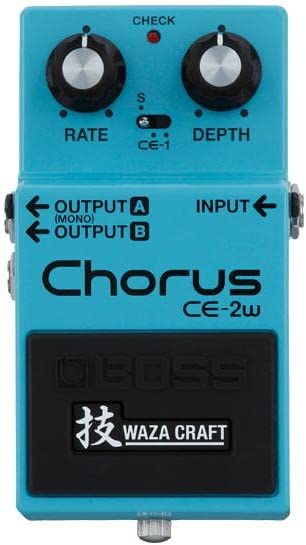
First and foremost, the pedal provides an instant and easily controllable method for creating a full, layered sound.
It can be particularly useful for solo performers who want to add depth and complexity to their music.
Additionally, the chorus effect can add warmth and presence to clean guitar tones, giving them a more polished and professional quality.
The pedal can also thicken distorted tones, providing a greater sense of sustain and depth without muddying the overall sound.
Furthermore, chorus pedals are highly versatile and can be used effectively across various musical genres, from rock and pop to jazz and experimental music, making them a valuable addition to any musician’s toolkit.
The history of the chorus pedal can be traced back to the late 1960s and early 1970s, when the first analog chorus effect units were developed.
One of the earliest examples was the Roland Jazz Chorus amplifier, which introduced the world to the distinct chorus sound.
The effect was achieved through an integrated analog circuit that used bucket-brigade delay (BBD) chips.
As the effect’s popularity grew, standalone chorus pedals emerged in the late 1970s with devices like the Boss CE-1 Chorus Ensemble.
This marked the beginning of a long line of chorus pedals that would evolve, incorporating new technologies, such as digital signal processing, and offering an increasing range of features and capabilities.
Top 3 chorus pedals:
Boss Waza Craft CE-2W Chorus:
The Boss Waza Craft CE-2W is a high-quality analog chorus pedal that pays tribute to the legendary Boss CE-1 and CE-2 pedals.
It features a switch that allows users to select between the classic CE-1 mode, with its lush, warm chorus sound, and the iconic CE-2 mode, which offers a more focused and defined chorus effect.
The CE-2W also includes a vibrato mode, providing additional sonic versatility.
In addition, the pedal’s build quality and reliability are top-notch, making it an excellent choice for musicians seeking a high-quality, versatile chorus pedal.
MXR M234 Analog Chorus:
The MXR M234 is an all-analog chorus pedal that delivers a rich, organic sound with plenty of depth and warmth.
It features simple controls for level, rate, and depth, allowing users to dial in their preferred chorus sound easily.
The M234 also includes a unique “EQ” control, which precisely shapes the pedal’s tone, ensuring it complements the user’s overall sound.
In addition, its compact size and sturdy build make it a great option for guitarists who need a reliable, great-sounding chorus pedal that won’t take up too much space on their pedalboard.
Strymon Deco:
Although not exclusively a chorus pedal, it is a highly versatile, high-quality multi-effects pedal with a stunning chorus effect among its many features.
The Deco emulates the characteristics of vintage tape recording equipment.
Its chorus effect is derived from the natural pitch and time modulation when two tape machines run in parallel.
The Deco’s controls allow for a wide range of chorus sounds, from subtle, lush textures to more pronounced, swirling effects.
In addition to its chorus capabilities, the Deco offers tape saturation, flanging, and delay effects, making it a versatile and valuable addition to any pedalboard.
Compatibilities with other effects pedals:
Regarding compatibility with other effects pedals, chorus pedals play well with various devices.
However, the order in which the pedals are arranged in the signal chain can significantly impact the overall sound.
A common practice is to place the chorus pedal after overdrive, distortion, and compression pedals but before delay and reverb effects.
This arrangement ensures that the chorus effect is applied to a relatively clean and consistent signal, allowing it to effectively modulate the pitch and timing without introducing unwanted artifacts or noise.
Nevertheless, experimentation with pedal order can lead to interesting and unique sounds, and there is no definitive “correct” sequence.
For example, some guitarists prefer to place their chorus pedals before distortion or overdrive effects, resulting in a more pronounced modulation that can create a more aggressive, textured sound.
Additionally, chorus pedals can be used with other modulation effects, such as flangers, phasers, and tremolos, to create even more complex and diverse sonic landscapes.
The key to finding the optimal arrangement and combination of effects pedals is to experiment and trust one’s ears and musical sensibilities.
8. Flanger pedal
A flanger pedal is a type of effects pedal used in music production and performance to create a distinctive sound effect.
The effect is created by mixing two identical audio signals and then delaying one of the signals by a small amount, typically a few milliseconds, while modulating the delay time with a low-frequency oscillator.
This creates a sweeping effect that sounds like a jet plane or a rushing wind.
The effect produced by a flanger pedal is often used in psychedelic rock, heavy metal, and electronic music.
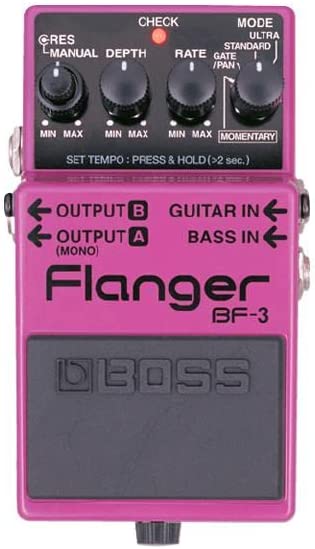
It can be used on various instruments, including guitar, bass, keyboards, and drums.
Flanger pedals can create a wide range of sounds, from subtle modulation to extreme sound effects.
The importance of a flanger pedal in music production and performance is that it provides musicians and producers with a tool to create unique and distinctive sounds that cannot be achieved with other types of effects pedals.
In addition, the flanger effect can add depth and dimension to a mix, making it sound fuller and more immersive.
Furthermore, flanger pedals are easy to use and can be added to a signal chain with minimal setup.
They are also relatively affordable, making them accessible to musicians and producers at all levels of experience and budget.
The flanger effect was discovered accidentally in the early 1960s by engineers at the Les Paul studio in Hollywood.
The engineers were experimenting with tape recorders and discovered that mixing two identical audio signals while delaying one of the signals could create a unique sound effect.
The first commercial flanger pedal was the Electric Mistress, introduced by Electro-Harmonix in 1975.
The Electric Mistress was an instant success and was used by many famous guitarists, including David Gilmour of Pink Floyd and Eddie Van Halen of Van Halen.
Since then, many other companies have produced flanger pedals with unique features and sound.
Today, flanger pedals are an essential tool for many musicians and producers and are used in a wide range of genres and styles of music.
Top 3 flanger pedals:
Electro-Harmonix Electric Mistress:
The Electro-Harmonix Electric Mistress is one of the original flanger pedals and is still considered one of the best.
It has a warm, vintage sound and can produce many flanging effects.
In addition, it features a feedback control that allows users to adjust the intensity of the effect and a sweep control that allows users to adjust the frequency range of the effect.
MXR M117R Flanger:
The MXR M117R Flanger is a modern take on the classic flanger pedal.
It features a variety of controls, including manual, width, speed, and regeneration, that allow users to fine-tune the flanging effect to their liking.
It also features a true bypass switch that ensures no loss of tone when the pedal is not in use.
Boss BF-2 Flanger:
The Boss BF-2 Flanger is a classic pedal by many famous guitarists, including Kurt Cobain of Nirvana and Johnny Greenwood of Radiohead.
It features a range of controls, including rate, depth, and manual, that allow users to adjust the flanging effect to their liking.
It also features a mono input and stereo output, making it a versatile option for use in various setups.
Compatibilities with other effects pedals:
Flanger pedals are compatible with other effects, including delay, reverb, and distortion pedals.
As a result, many guitarists use flanger and other effects pedals to create unique and complex sounds.
When using a flanger with other pedals, it is important to consider how they are connected in the signal chain.
Generally, it is recommended to connect the flanger pedal after any distortion or overdrive pedals but before any delay or reverb pedals.
This allows the flanging effect to be applied to the distorted signal while preserving the integrity of the delay or reverb effect.
Another way to use flanger pedals in combination with others is to use them in parallel.
This involves splitting the signal into two paths.
One is sent through the flanger pedal, and the other is through another type of effect pedal, such as a delay or reverb pedal.
The two signals are mixed to create a unique and complex sound.
9. Phaser pedal
A Phaser pedal is a type of guitar effects pedal that alters the sound of a guitar signal by creating a phase shift between two identical signals.
This creates a unique, swirling sound often used in funk, rock, and other genres of music.
The Phaser pedal is an important tool for guitarists because it adds a unique texture to their sound that can’t be achieved with other effects.
The Phaser pedal creates a subtle and distinctive sound by creating a phase shift between two signals.

It can create various effects, from a subtle, slow sweep to a fast, pulsating sound.
One of the most important aspects of the Phaser pedal is its versatility.
Unlike other effects pedals designed for specific music genres, the Phaser pedal can be used in various styles.
It is often used in funk, rock, and metal music, but it can also be used in jazz, country, and other genres.
The Phaser pedal is also important because it is easy to use.
Unlike other effects pedals that require a lot of tweaking and experimentation to get the desired sound, the Phaser pedal can be set up and adjusted quickly.
This makes it a great tool for live performances, where time is often limited.
The Phaser pedal has a long and storied history in guitar effects.
The first Phaser pedals were developed in the 1970s when electronic effects became more popular in music.
Companies like MXR and Electro-Harmonix made the first Phaser pedals, and they quickly became popular with guitarists who wanted to create new and interesting sounds.
Over the years, the Phaser pedal has evolved and changed.
New technologies have been developed that have allowed for greater control over the sound of the Phaser pedal, and new features have been added that make it easier to use.
Today, the Phaser pedal is more popular than ever, and guitarists of all levels and styles use it.
Top 3 phaser pedals:
MXR Phase 90:
The MXR Phase 90 is one of the most popular Phaser pedals ever.
It has a simple, easy-to-use design and can create various sounds.
In addition, these 90 has a single control knob that allows you to adjust the speed of the phase shift, making it easy to create the perfect sound for your playing style.
Electro-Harmonix Small Stone:
The Electro-Harmonix Small Stone is another classic Phaser pedal that guitarists have used for decades.
It has a warm, analog sound ideal for creating vintage-style effects.
The Small Stone has a simple, two-knob design that makes it easy to use and can create a wide range of sounds.
Strymon Mobius:
The Strymon Mobius is a high-end Phaser pedal that offers a wide range of features and controls.
It has twelve different Phaser algorithms that can be adjusted to create a wide range of sounds.
The Mobius also has a wide range of controls that allow you to fine-tune the sound to your liking, making it a great choice for guitarists who want maximum control over their sound.
Compatibilities with other effects pedals:
The Phaser pedal is a versatile tool that can be combined with other effects pedals to create a wide range of sounds.
One of the most popular combinations is the Phaser with a distortion pedal.
This combination creates a unique sound popular in rock and metal music.
Adding a distortion pedal before the Phaser pedal can create a more aggressive, distorted sound that is enhanced by the Phaser’s swirling effect.
The Phaser pedal can also be used with other modulation pedals, such as chorus and flanger.
Combining these effects allows you to create complex, layered sounds ideal for ambient and experimental music.
Another popular combination is the Phaser pedal with a delay pedal.
Adding a delay pedal after the Phaser allows you to create a unique, echoing sound that is ideal for creating spacey, atmospheric sounds.
10. Tremolo pedal
A tremolo pedal is an effects pedal used in electric guitar playing that modulates the volume of a signal, creating a rhythmic pulsation in the sound.
It is an important tool for guitar players, and it has been used in various genres, from blues and country to rock and roll and even electronic music.
A tremolo pedal is essential for guitar players who want to create a rhythmic pulsation in their sound.
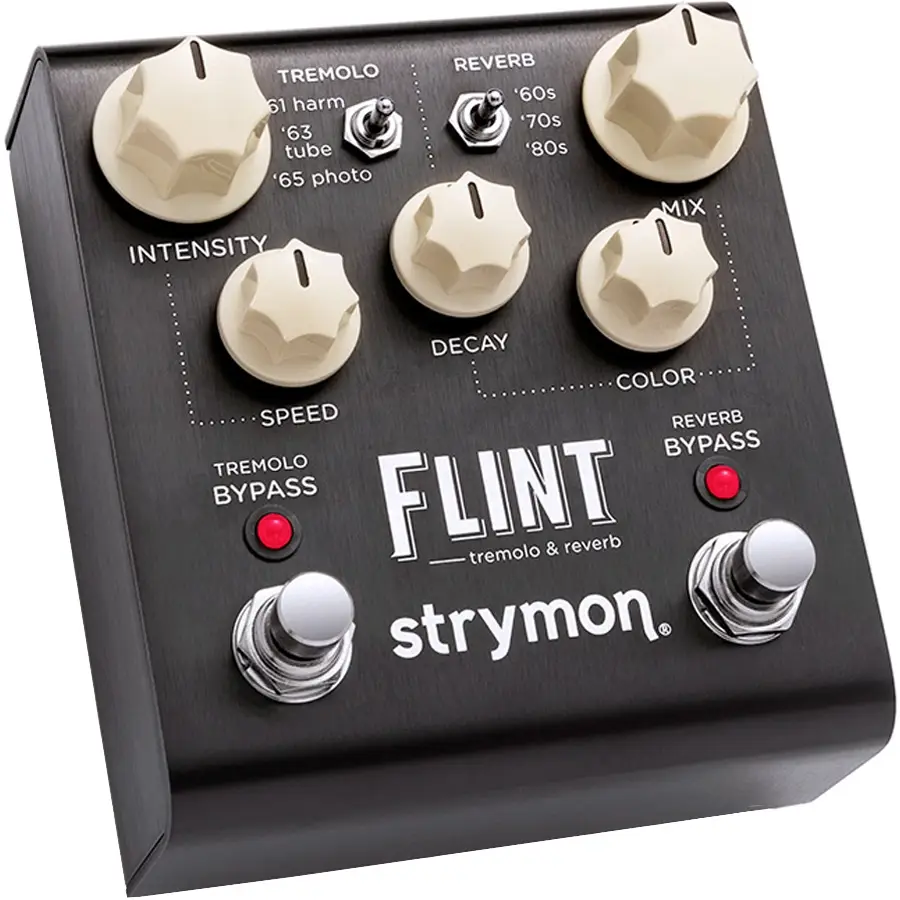
The tremolo effect adds a pulsing, wavy sound to the guitar’s signal, creating a unique and dynamic sound.
The effect is used to create a variety of moods, from a gentle, pulsing effect to a fast, choppy effect that adds excitement to a song.
The tremolo effect is often used to create a vintage sound, as it was commonly used in early rock and roll and surf music.
It is also used in modern music to add texture and depth to guitar parts.
Guitarists often use a tremolo pedal to create a pulsing effect that adds a sense of movement to their playing.
The tremolo effect was first created in the 1950s and was used in early rock and roll and surf music.
The effect was created by varying the volume of the guitar’s signal using an oscillator.
This created a pulsing, wavy sound that was popular in the music of the time.
In the 1960s, tremolo pedals became more popular, and many guitar players began using them to create a unique and dynamic sound.
The first tremolo pedals were analog and were created by modifying existing guitar amps.
The first commercial tremolo pedals were released in the 1970s and were made by companies such as Electro-Harmonix and MXR.
Many tremolo pedals are available today, from vintage-style analog pedals to modern digital ones.
However, the effect is still popular among guitar players and is used in various genres.
Top 3 tremolo pedals:
Strymon Flint Tremolo & Reverb Pedal:
The Strymon Flint is a high-quality tremolo and reverb pedal widely regarded as one of the best pedals on the market.
The pedal features three tremolo modes (opto, bias, and harmonic) and three reverb modes (hall, plate, and room).
The pedal is versatile and can be used for various sounds and styles.
The Strymon Flint is a digital pedal using advanced algorithms to create sounds.
It also features stereo outputs and an expression pedal input, allowing even more control over the effect.
EarthQuaker devises Hummingbird V3 Tremolo Pedal:
The EarthQuaker Devices Hummingbird V3 is a versatile and unique tremolo pedal with many controls and options.
The pedal features a “chop” switch that allows for fast and choppy tremolo sounds and a “flutter” switch that creates a more subtle and wavy sound.
The Hummingbird V3 also features a wide range of controls, including depth, rate, level, and a “bias” control allowing a more square-wave sound.
The pedal is also very durable and is built to withstand heavy use.
Fulltone Supa-Trem Tremolo Pedal:
The Fulltone Supa-Trem is a classic, vintage-style tremolo pedal known for its warm and organic sound.
The pedal features two tremolo modes (photo-cell and photocell+vibe) and a wide range of controls, including depth, speed, volume, and waveform.
The pedal also features a “hard/soft” switch for a more aggressive or subtle sound.
The Fulltone Supa-Trem is an analog pedal, which gives it a warm and natural sound that is highly sought after by many guitar players.
The pedal is versatile and can be used for various styles and sounds.
Compatibilities with other effects pedals:
Tremolo pedals are often combined with other pedals to create unique and dynamic sounds.
For example, one common combination is a tremolo pedal with a delay pedal, which creates a pulsing and echoing sound that adds depth and complexity to a guitar part.
Tremolo pedals can also be used with other modulation pedals, such as chorus and phaser.
Combined, these pedals can create various sounds and textures perfect for experimental and ambient music.
11. Octave pedal
An octave pedal is an effects pedal used in music production and performance that can produce sounds one octave higher or lower than the original note played on a guitar or bass guitar.
This pedal creates the illusion that the player plays multiple instruments simultaneously, enhancing a musical performance’s overall sound.
An octave pedal can create unique soundscapes, add texture to existing music, or create a fuller and more powerful sound.

Octave pedals are incredibly important in modern music production, particularly in rock, pop, and metal genres.
They allow guitarists and bassists to create unique and interesting sounds that would be difficult or impossible.
By producing sounds one octave higher or lower than the original note, an octave pedal can help musicians create a richer, fuller sound that adds depth and complexity to a song.
Moreover, octave pedals can add texture and dynamics to existing music.
Adding an octave pedal to a guitar or bass guitar rig allows a musician to create a more interesting and complex sound that adds depth and dimension to their playing.
This can help make a song more memorable and stand out from the crowd.
The electronics company Electro-Harmonix introduced the first-octave pedal in the late 1960s.
This pedal was called the Octave Multiplexer, designed to create a lower-octave sound that would complement the original note played on the guitar.
The Octave Multiplexer used a circuit that generated a square wave filtered to produce the desired octave sound.
In the following years, other electronics companies began producing octave pedals, each with unique features and sound characteristics.
Some of the most popular octave pedals of the 1970s and 1980s included the Boss OC-2 Octave Pedal, the MXR Blue Box, and the EHX Micro POG.
These pedals were popular among guitarists and bassists looking to create unique and interesting sounds.
They helped establish the octave pedal as an essential tool in the modern musician’s arsenal.
Top 3 octave pedals:
Boss OC-3 Super Octave:
The Boss OC-3 Super Octave is one of today’s most popular octave pedals.
It features various octave settings, including polyphonic, drive, and octave up/down.
This highly customizable pedal has tone, level, and mode controls.
Electro-Harmonix POG2:
The Electro-Harmonix POG2 is another highly popular octave pedal that professional musicians widely use.
This pedal features a range of octave settings, including octave up, octave down, and detune.
It also includes a variety of other effects, such as filter and attack, that allow musicians to create unique and complex sounds.
TC Electronic Sub ‘N’ Up Octaver:
The TC Electronic Sub ‘N’ Up Octaver is a high-quality octave pedal designed to produce a range of octave sounds, including sub and up octaves.
This pedal features a range of controls, including tone, blend, and modulation, that allow musicians to customize their sound.
Compatibilities with other effects pedals:
Octave pedals can be used with other pedals to create unique and interesting sounds.
For example, an octave pedal can be combined with a distortion or overdrive pedal to create a more aggressive and powerful sound.
Alternatively, an octave pedal can be used with a delay or reverb pedal to create a more atmospheric and ambient sound.
One of the key advantages of octave pedals is their ability to work well with other effects pedals.
Because they produce a clean, pure tone not affected by other effects, octave pedals can be used with a wide range of other effects pedals without affecting the sound quality.
This makes them highly versatile and allows musicians to experiment with different sounds and effects to create unique and interesting music.
When using an octave pedal with other pedals, it is important to consider how they are connected.
Typically, an octave pedal should be placed early in the signal chain, before any distortion or overdrive pedals, to ensure the original note is properly processed before the octave effect is added.
This will help ensure the sound remains clear and powerful, even when other effects are added to the signal chain.
12. Compressor pedal
A compressor pedal is an electronic device used in the music industry to control the dynamic range of a sound signal.
The dynamic range is the difference between a sound’s loudest and softest parts.
The compressor pedal reduces the loud parts of the signal and boosts the soft parts to create a consistent and balanced sound.
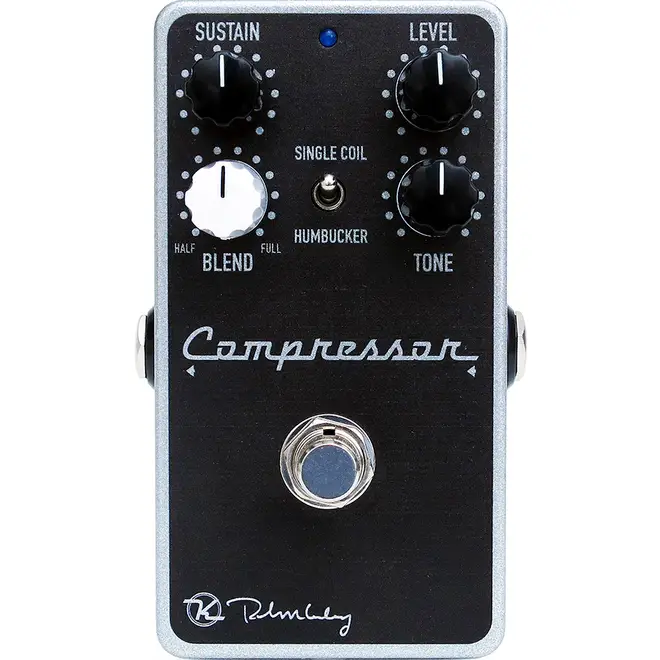
It achieves this by attenuating the input signal when it exceeds a certain threshold level and then amplifying the attenuated signal to restore its original volume.
A compressor pedal is essential in any musician’s arsenal, especially those who play electric guitars, bass guitars, and other stringed instruments.
It is used to even out the signal level between notes, enhance sustain, and reduce noise.
As a result, the pedal helps the instrument sound more polished and professional, and it’s particularly useful in recording studios and live performances.
It enables the musician to play softer notes without getting drowned out by the louder ones and helps the notes sound more distinct.
The compressor pedal has been around since the 1960s, but it wasn’t until the 1970s that it gained widespread popularity.
The first compressors were built using vacuum tubes and were large, bulky, and expensive.
They were used primarily in recording studios and were not practical for live performances.
In the 1970s, manufacturers started building compressor pedals using solid-state technology.
These pedals were smaller, more affordable, and more reliable than their predecessors.
The MXR Dyna Comp was one of the first compressor pedals to use this technology and is still considered a classic today.
In the 1980s, digital technology emerged, and manufacturers started building compressors that used digital signal processing.
These pedals offered more control and flexibility than their analog counterparts, but some musicians felt they lacked analog compressors’ warmth and character.
Many different compressor pedals are on the market, ranging from simple analog pedals to complex digital ones.
The most popular brands include MXR, Boss, Keeley, and Empress.
Top 3 compressor pedals:
Keeley Compressor Plus:
The Keeley Compressor Plus is a high-quality compressor pedal that offers a wide range of control options.
It features a blend control that allows you to mix the compressed and uncompressed signals, a sustain control that adjusts the amount of compression, and an attack control that adjusts the speed at which the compressor kicks in.
The pedal also has a tone control that adjusts the signal’s brightness.
The Keeley Compressor Plus is particularly useful for guitarists who play in various styles, from country to metal.
MXR Dyna Comp:
The MXR Dyna Comp is a classic compressor pedal that has been around since the 1970s.
It is a simple pedal offering two controls: output and sensitivity.
The output control adjusts the overall volume of the signal, while the sensitivity control adjusts the amount of compression.
The MXR Dyna Comp is particularly popular among guitarists who play blues and classic rock.
Empress Compressor:
The Empress Compressor is a high-end compressor pedal that offers a wide range of control options.
It features an attack control that adjusts the speed at which the compressor kicks in, a release control that adjusts the speed at which the compressor lets go of the signal, and a mix control that allows you to blend the compressed and uncompressed signals.
The pedal also has a side-chain input that allows you to use an external signal to trigger the compressor.
The Empress Compressor is particularly useful for guitarists who play in various styles, from funk to jazz.
Compatibilities with other effects pedals:
Compressor pedals are often used with other pedals, such as overdrive, distortion, and delay pedals.
They can help to balance out the differences in volume and dynamics between different effects pedals and can also help to reduce noise and unwanted feedback.
When using a compressor pedal with an overdrive or distortion pedal, it’s important to place the compressor before the overdrive or distortion pedal in the signal chain.
This allows the compressor to even out the signal before it is distorted, which can result in a more consistent and natural-sounding tone.
When using a compressor pedal with a delay pedal, it’s generally best to place the compressor after the delay pedal in the signal chain.
This allows the delay effect to remain unaffected by the compressor while still allowing the compressor to even out the signal before it reaches the amplifier.
In general, compressor pedals can be used with any other type of pedal or effect and can be placed anywhere in the signal chain, depending on the desired effect.
It’s important to experiment with different signal chain configurations to find the best sound for your particular setup.
13. EQ pedal
An EQ pedal, or equalizer pedal, is a type of effects pedal used in music production and performance to shape the frequency response of an audio signal.
It allows users to boost or cut specific frequencies in their sound to achieve a desired tone.
EQ pedals typically have several sliders or knobs that can be adjusted to alter the frequency response of the input signal.
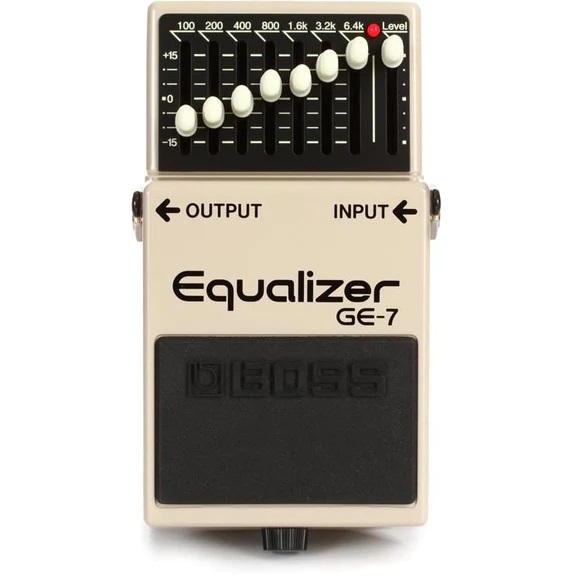
An EQ pedal can be an essential tool for any musician or audio engineer, as it allows for precise control over the tonal characteristics of an audio signal.
By adjusting the EQ settings, users can tailor their sound to match the acoustics of a particular venue, correct imbalances in their instrument’s tone, or create unique and distinctive sounds.
EQ pedals can also shape the tone of other effects pedals in a signal chain, making them an important tool for guitarists and other musicians who use effects pedals.
The history of the EQ pedal can be traced back to the early days of guitar amplification.
In the 1950s and 1960s, guitarists began experimenting with different ways to modify their amplifier’s tone, including using external EQ units.
One of the earliest examples of an EQ pedal was the Fender Tone Booster, released in the early 1960s.
This pedal allowed guitarists to adjust the tone of their amplifiers using a simple three-band EQ.
Over the years, EQ pedals have become more complex and versatile, with many models featuring up to ten bands of EQ control.
The 1970s saw the rise of the graphic EQ pedal, which featured a series of sliders that could be adjusted to boost or cut specific frequency ranges.
In the 1980s and 1990s, digital signal processing technology allowed even more sophisticated EQ effects, with many pedals featuring programmable presets and MIDI control.
Many EQ pedals are available today, ranging from simple three-band units to complex digital processors with dozens of EQ bands and advanced features.
Top 3 EQ pedals:
Boss GE-7 Graphic EQ:
The Boss GE-7 Graphic EQ has been a classic pedal in production for over three decades.
It features seven EQ bands, each with a +/- 15 dB boost or cut range.
The GE-7 is known for its versatility and transparency, allowing users to make precise adjustments to their sound without adding unwanted coloration or noise.
The GE-7 is popular with guitarists who want to shape the tone of their amplifier, as well as with bassists who want to fine-tune the low-end frequencies of their instrument.
It can also shape the tone of other effects pedals in a signal chain, making it a useful tool for creating complex and layered sounds.
MXR M108S Ten Band EQ:
The MXR M108S Ten Band EQ is a high-end EQ pedal with ten EQ bands with a +/- 12 dB boost or cut range.
It also includes a separate gain and volume control, allowing users to adjust their signal level before and after the EQ stage.
The M108S is known for its transparent and accurate sound, with each EQ band providing precise and detailed control over a specific frequency range.
It also includes true bypass switching and a noise reduction circuit, making it a great choice for recording and live performance applications.
Empress Effects ParaEQ:
The Empress Effects ParaEQ is a boutique EQ pedal with a four-band parametric EQ with fully adjustable frequency, Q, and gain controls.
This allows for highly precise control over the tone of an audio signal, making it a popular choice among studio engineers and audiophiles.
The ParaEQ also includes a high-pass and low-pass filter and a boost-only mode for each EQ band.
It also features a foot-switchable boost function, allowing users to instantly increase the level of their signal by up to 30 dB.
The Empress Effects ParaEQ is a versatile and high-quality EQ pedal ideal for users who demand precise control over their tone.
Compatibilities with other effects pedals:
One of the great advantages of using an EQ pedal is its ability to shape the tone of other effects pedals in a signal chain.
For example, a guitarist may use an EQ pedal to boost the midrange frequencies of their signal before running it through a distortion pedal, creating a more aggressive and cutting sound.
Similarly, an EQ pedal can fine-tune the tone of a delay or reverb effect, allowing users to tailor the effect to their specific needs.
EQ pedals can also be used to balance the tone of multiple instruments in a live performance setting, helping to create a more cohesive and balanced mix.
Regarding compatibility with other pedals, EQ pedals are generally very versatile and can be used with most other effects pedals.
However, it’s worth noting that the order of effects pedals in a signal chain can significantly impact all signal tones.
So, for example, placing an EQ pedal before a distortion pedal will result in a different sound than placing it after the distortion pedal.
14. Volume pedal
A volume pedal is a type of foot-controlled pedal used by musicians to adjust the volume of their musical instrument or sound system.
The pedal is typically connected to an amplifier or a mixing console.
It allows the player to smoothly control the volume of their instrument without the need to adjust the volume on the amplifier or mixer.

Volume pedals are a crucial component of a musician’s toolkit, particularly useful for guitarists and keyboardists.
Using a volume pedal, a musician can achieve a wide range of tonal variations and dynamic effects without adjusting the volume on their amplifier or mixer.
This can be particularly useful in live performances, where the musician needs to adjust their instrument’s volume quickly without interrupting the music’s flow.
Volume pedals also offer a lot of creative possibilities.
For example, a guitarist can use a volume pedal to create swells, where the guitar’s volume gradually increases over time, creating a dramatic effect.
Similarly, a keyboardist can use a volume pedal to create dynamic variations in their playing, such as gradually increasing or decreasing the volume of a piano or organ sound.
Another advantage of using a volume pedal is that it allows a musician to control the overall volume of their instrument without affecting the tone.
This can be particularly important for guitarists who want to maintain the same tone when playing at different volumes.
Using a volume pedal, the guitarist can adjust the volume of their instrument without changing the tone.
The Gibson company developed the first volume pedal in the 1930s.
This “Multi-Voice” pedal was designed with electric guitars and allowed the player to switch between different pickup configurations.
The volume control was added to the pedal as an afterthought, but it soon became clear that the volume control was the most useful feature of the pedal.
In the 1940s, the Electro-Harmonix company introduced the “Volume-Pedal,” designed specifically for controlling the volume of electric guitars.
This pedal was based on a simple potentiometer circuit and was controlled by a foot-operated lever.
Over the years, many volume pedals have been developed, including optical and digital ones.
Top 3 Volume pedals:
Boss FV-500H Volume Pedal:
The Boss FV-500H is a high-quality volume pedal for guitar, bass, and other instruments.
It features a rugged aluminum chassis, an adjustable pedal feel, and a minimum volume control for setting a precise minimum volume level.
The FV-500H also has an expression output, which allows it to be used as an expression pedal with other effects pedals.
Ernie Ball VP Jr. Volume Pedal:
The Ernie Ball VP Jr. is a compact, affordable volume pedal perfect for guitarists and musicians.
It features durable construction, adjustable pedal tension, and a passive design that does not require any batteries or external power.
The VP Jr. also has a tuner output, allowing players to tune their instrument without unplugging the pedal.
Morley PVO+ Volume Pedal:
The Morley PVO+ is a versatile volume pedal for guitar, bass, and other instruments.
It features a rugged metal construction, adjustable pedal tension, and a switchable minimum volume control for setting a precise minimum volume level.
The PVO+ also has a built-in buffer, which helps ‘s one preserve the instrument’s tone and prevent signal loss.
Compatibilities with other effects pedals:
Volume pedals are compatible with many other pedals, including distortion, delay, and modulation effects.
Many guitarists use a volume pedal in conjunction with others to achieve a range of tonal variations and dynamic effects.
For example, a guitarist might use a distortion pedal to create a heavy, distorted tone and then use a volume pedal to gradually increase or decrease the guitar’s volume, creating a dynamic effect.
Similarly, a guitarist might use a delay pedal to create a repeating echo effect and then a volume pedal to gradually fade in or out of the sound.
One important consideration when using a volume pedal with other pedals is the order in which the pedals are connected.
Generally, it is recommended to connect the volume pedal after any distortion or overdrive pedals, as this will allow the player to maintain the same level of distortion regardless of the volume level.
Additionally, connecting the volume pedal before any modulation or time-based effects can help to create a smoother, more natural-sounding effect.
15. Boost pedal
A boost pedal is a type of guitar effects pedal used to increase the level or volume of an electric guitar signal.
It is designed to boost the signal strength of the guitar, making it louder and more prominent in a mix.
Boost pedals can be used to increase the volume of a guitar solo or riff or to boost the overall level of a guitar signal when playing with a band.
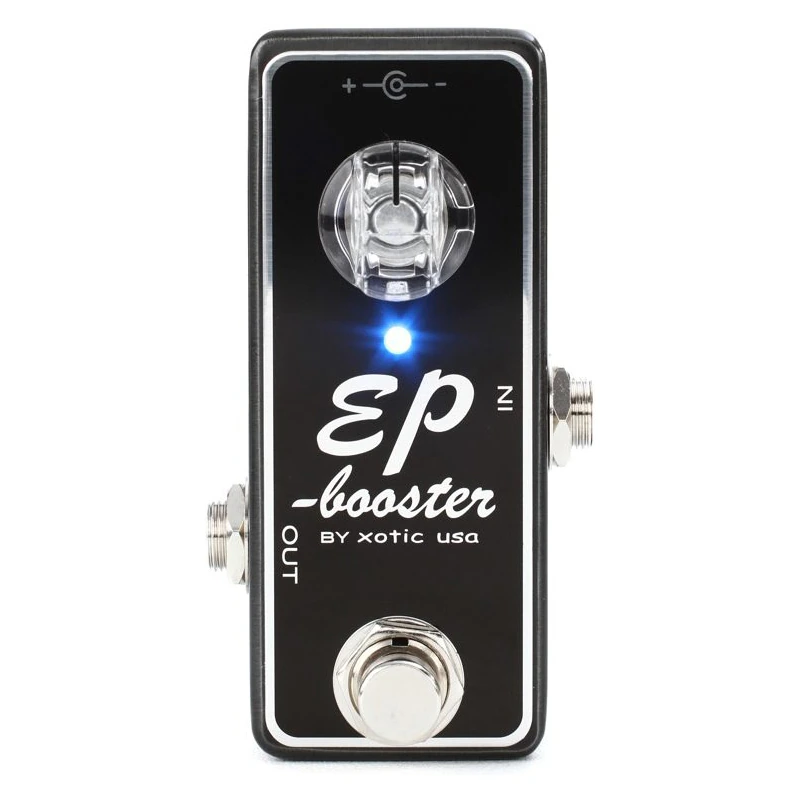
Boost pedals typically have a simple design, with just one or two knobs to adjust the boost level.
Some boost pedals also have a tone control or EQ section, which can be used to shape the tone of the boosted signal.
Boost pedals can be used as a standalone effect or in combination with other guitar pedals to achieve specific tones and effects.
A boost pedal is essential for any guitarist looking to enhance their sound.
It can increase the volume of a guitar signal, allowing a player to cut through a mix and stand out in a band setting.
Boost pedals are also useful for adding sustain and overdrive to a guitar tone, which can help to create a more dynamic and expressive sound.
Boost pedals are particularly useful for guitarists who play in genres that require a high level of gain or distortion, such as heavy metal or hard rock.
By boosting the level of the guitar signal, a boost pedal can help to push an amplifier into overdrive, creating a thick and heavy sound.
Boost pedals can also add a clean boost to a guitar tone, which can help increase the volume without adding any unwanted distortion or coloration to the sound.
The history of the boost pedal can be traced back to the early days of electric guitar amplification.
In the 1950s and 1960s, guitarists began experimenting with increasing the volume of their guitar signals, often by modifying their amplifiers or using external preamps.
One of the earliest boost pedals was the Dallas Rangemaster, first produced in the early 1960s.
The Rangemaster was a simple booster pedal designed to be used with a guitar and amplifier and was popular among guitarists in the UK during the British Invasion era.
Another early boost pedal was the Electro-Harmonix LPB-1, first produced in the late 1960s.
The LPB-1 was a simple booster pedal designed to be used with a guitar and amplifier and was popular among guitarists in the US during the psychedelic rock era.
Since then, there have been many different boost pedals produced by various manufacturers, each with its unique features and characteristics.
Today, boost pedals are an essential tool for guitarists of all genres and styles and are widely used in both live performance and studio recording settings.
Top 3 boost pedals:
Xotic EP Booster:
The Xotic EP Booster is a popular boost pedal known for its warm and transparent tone.
The pedal features a simple design with just one knob to adjust the boost level.
When pushed to higher levels, the EP Booster can add a clean boost to a guitar signal or a bit of grit and overdrive.
Keeley Electronics Katana:
The Keeley Electronics Katana is a versatile boost pedal with a three-band EQ section for shaping the boosted tone.
The pedal also features a switchable clean boost mode, which allows for a transparent boost, and a dirty boost mode, which adds some grit and overdrive to the signal.
Fulltone Fat-Boost 3:
The Fulltone Fat-Boost 3 is a boutique boost pedal known for its warm and organic tone.
The pedal features a unique circuit design that provides a wide range of boost options, from a clean boost to a full-bodied overdrive.
The Fat-Boost 3 also features a switchable EQ section, allowing additional tone-shaping options.
Compatibilities with other effects pedals:
Boost pedals are often combined with other guitar pedals to achieve specific tones and effects.
One popular combination is using a boost pedal.
The boost pedal increases the guitar signal level, while the overdrive pedal adds distortion and saturation to the sound.
This combination is particularly popular among guitarists who play blues or rock music.
Another common combination is using a boost pedal.
The boost pedal increases the guitar signal level, while the distortion pedal adds high gain and saturation to the sound.
This combination is popular among guitarists who play heavy metal or hard rock.
Finally, boost pedals can be combined with delay or reverb pedals to create atmospheric and ambient guitar tones.
The boost pedal increases the guitar signal level, while the delay or reverb pedal adds space and depth to the sound.
16. Looper Pedal
A looper pedal is an electronic device musicians, particularly guitarists, use to record, overdub, and audio playback loops in real time.
This powerful tool lets artists layer different parts of a song or create unique sonic textures during live performances or studio recordings.
Using a looper pedal, musicians can become a one-person band, seamlessly building and manipulating layers of sound to create intricate and mesmerizing musical arrangements.
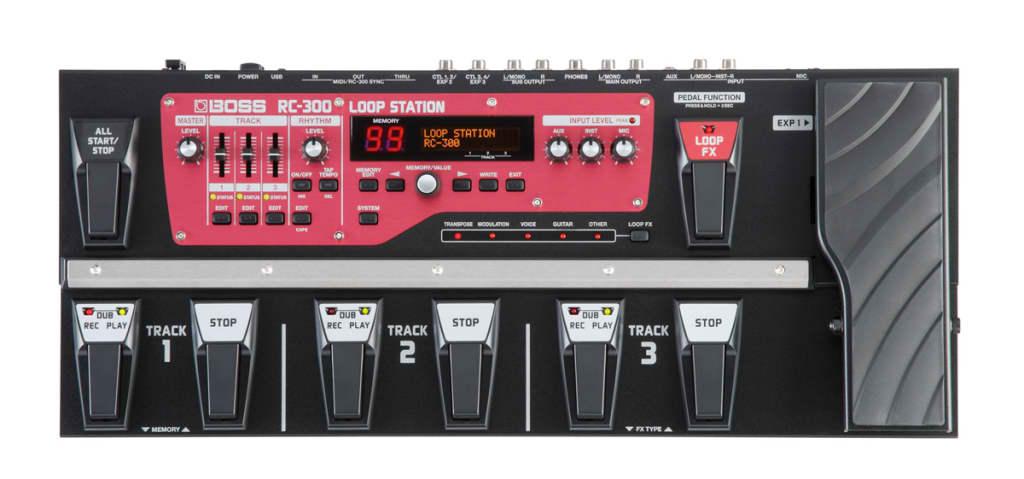
The importance of a looper pedal cannot be overstated, as it offers musicians a versatile and creative tool for both performance and practice.
Looper pedals can layer multiple instruments or vocals for live performances, allowing solo artists to create a rich, full sound without additional musicians.
Furthermore, looper pedals are invaluable for practice sessions.
They enable musicians to record a chord progression or riff, then play along with it to develop their improvisational skills, timing, and technique.
The history of the looper pedal dates back to the late 1950s and early 1960s when tape-based delays and echo units, such as the Echoplex and Roland Space Echo, were introduced.
These devices used magnetic tape to record and playback sound, allowing musicians to create simple loops.
However, the advent of digital technology in the 1980s revolutionized looping, with devices like the Lexicon PCM42 and the Electro-Harmonix 16-Second Digital Delay offering more advanced looping capabilities.
As a result, the modern looper pedal as we know it today emerged in the late 1990s and early 2000s.
With the introduction of products like the Line 6 DL4 and the BOSS RC-20 Loop Station, which provided user-friendly interfaces, longer loop times,, and additional features, such as reverse playback and tempo control.
Top 3 looper pedals:
BOSS RC-300 Loop Station:
A flagship looper pedal from BOSS, the RC-300 is renowned for its extensive features, reliability, and ease of use.
It offers three synchronized stereo tracks with dedicated volume faders, transport controls, and an expression pedal for real-time control of various parameters.
The RC-300 also includes built-in effects, 99 onboard memory slots for storing loops, and a USB port for importing and exporting audio.
Electro-Harmonix 95000 Performance Loop Laboratory:
This looper pedal from Electro-Harmonix boasts six mono tracks and one stereo mixdown track per loop, allowing for complex, multi-layered arrangements.
With a generous 375 minutes of loop time, the 95000 is an excellent option for musicians seeking a powerful and versatile looping tool.
Additional features include a USB port, MIDI sync capabilities, and onboard effects.
TC Electronic Ditto X4 Looper:
The Ditto X4 is a compact and user-friendly looper pedal that offers two independent loop tracks with five minutes of loop time each.
Its intuitive design and high-quality audio make it popular for musicians at all skill levels.
Notable features include reverse and half-speed loop effects, MIDI sync capabilities, and stereo inputs and outputs.
Compatibilities with other effects pedals:
Regarding compatibility with other pedals, looper pedals generally work well alongside various effects pedals, such as distortion, reverb, and delay.
However, the pedal chain’s order is essential to achieve the desired sound.
Typically, a looper pedal should be placed at the end of the signal chain after all other effects pedals.
This arrangement ensures that the recorded loops incorporate the full range of effects, providing a cohesive and polished sound.
An effects loop on an amplifier can also help maintain signal clarity and prevent unwanted noise when multiple pedals are used.
When incorporating a looper pedal into a larger pedalboard, it is crucial to consider power requirements, compatibility with power supplies, and available space on the board.
Apart from effects pedals, looper pedals can be integrated with other instruments and MIDI devices.
Many looper pedals, such as the BOSS RC-300 and Electro-Harmonix 95000, feature MIDI sync capabilities, synchronizing them with drum machines, sequencers, and other MIDI-equipped devices.
This synchronization provides precise timing and seamless integration of loops with other elements of a performance or recording.
17. Noise Gate Pedal
A noise gate pedal is essential for guitarists, bassists, and other electronic instrument musicians.
It is an audio processing device that helps reduce unwanted noise in the signal chain.
Various sources, such as the instrument, amplifiers, or external interference, can generate this noise.

The noise gate pedal automatically silences the audio signal when it falls below a specified threshold.
The gate opens when the input signal exceeds this threshold, allowing the sound to pass through.
This helps eliminate unwanted noise or hum, providing a cleaner, more professional sound.
The significance of a noise gate pedal is immeasurable for musicians.
The noise gate pedal is an essential part of their equipment for those utilizing distortion, overdrive, or other effects that may intensify background noise.
This pedal aids in reducing noise, enabling musicians to create cleaner and more polished recordings or live shows.
Additionally, the noise gate pedal can assist in averting undesired feedback during live performances with increased volume.
The noise gate pedal is vital for musicians to enhance their sound quality.
The history of the noise gate pedal dates back to the 1960s when audio engineers began developing techniques to manage unwanted noise in recorded audio.
The noise gate was initially used in recording studios to clean up audio tracks by eliminating noise between takes or during quiet sections of a song.
In the 1970s, manufacturers started incorporating noise gate technology into their designs as guitar effect pedals became more popular.
The first commercially available Noise Gate pedal was the MXR Noise Gate/Line Driver, introduced in 1979.
This pedal became popular for guitarists, marking the beginning of the widespread use of Noise Gate pedals among musicians.
Top 3 noise gate pedal pedals:
Boss NS-2 Noise Suppressor:
A popular and reliable noise gate pedal from the renowned manufacturer Boss.
The NS-2 features a compact design and offers excellent noise reduction without compromising the tone.
It has a simple control layout, with threshold and decay knobs and a mode selector switch, allowing more precise noise suppression control.
In addition, the NS-2 includes a built-in loop, enabling you to isolate and suppress noise from specific pedals in your signal chain.
ISP Technologies Decimator II G String:
The Decimator II G String is a high-performance noise gate pedal that eliminates noise from high-gain guitar setups.
It features a unique tracking technology for seamless and transparent noise reduction.
In addition, the pedal has a simple design, with only one threshold knob for controlling the noise reduction level.
The Decimator II G String is particularly popular among metal guitarists and is known for maintaining its natural sustain and tone even during aggressive noise reduction.
Electro-Harmonix The Silencer: The Silencer from Electro-Harmonix is a versatile noise gate pedal that offers a wide range of noise reduction capabilities.
It features threshold, reduction, and release controls, allowing precise adjustments to fit any playing style or setup.
The Silencer also has an effects loop, making applying noise reduction to specific pedals in your chain easy.
In addition, this pedal is known for its transparent noise reduction and affordability, making it a popular choice among musicians on a budget.
Compatibilities with other effects pedals:
When it comes to compatibilities with other pedals, noise gate pedals are generally compatible with most types of effect pedals.
However, placing the noise gate pedal within the signal chain is crucial for achieving the best results.
Typically, the noise gate pedal should be placed after any gain-based effects (such as overdrive, distortion, or fuzz) and before any time-based or modulation effects (such as delay, reverb, chorus, or phaser).
This placement ensures that the noise gate pedal effectively reduces the noise generated by the gain-based effects while preserving the clarity and quality of the time-based and modulation effects.
Musicians may sometimes place the noise gate pedal within an effects loop.
For example, many amplifiers and multi-effects processors have built-in effects loops, allowing you to insert the noise gate pedal between your amplifier’s preamp and power amp sections.
This configuration can reduce noise in certain setups even more effectively, especially when using high-gain amplifier settings.
When using a noise gate pedal with other effects, it is essential to experiment with different settings and pedal placements to find the optimal configuration for your specific rig.
In addition, factors such as the type of instrument, amplifier, and other pedals in your signal chain can influence how well the noise gate pedal performs.
Therefore, it is crucial to take the time to fine-tune your setup to achieve the best possible noise reduction without compromising your desired tone.
18. Tuner Pedal
Please do not make a conclusion paragraph: A tuner pedal is an essential piece of equipment for musicians, particularly guitarists and bassists, that allows them to tune their instruments to the desired pitch accurately.
This compact device typically sits in the signal chain between the instrument and the amplifier or other effects pedals.
It is designed to quickly and precisely identify the pitch of the notes played on the instrument.
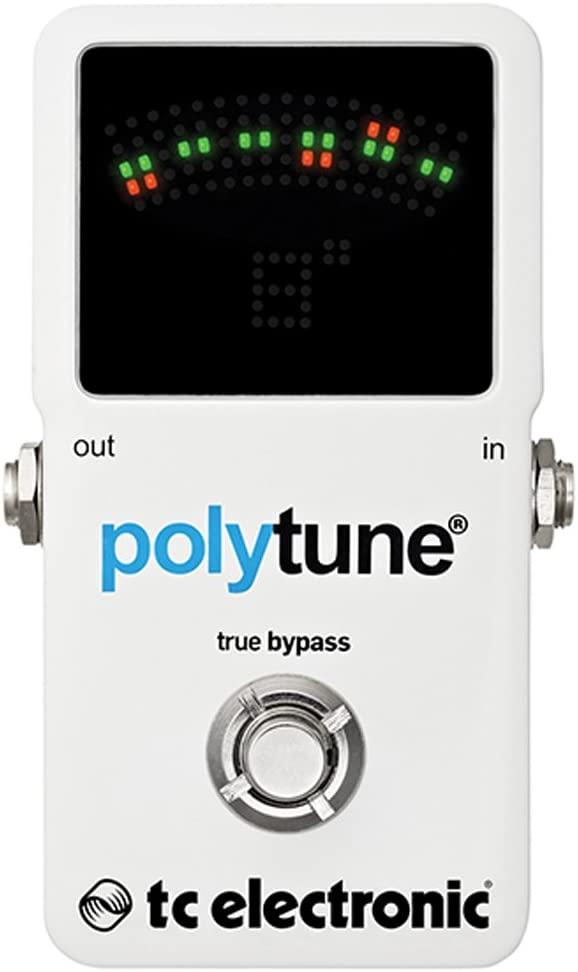
When a note is played, the tuner pedal’s display indicates whether the note is sharp, flat, or in tune, allowing the musician to make the necessary adjustments to the instrument’s tuning pegs.
The tuner pedal ensures the instrument is tuned and ready to produce the desired sound.
It is especially crucial for live performances, where even the slightest change in temperature or humidity can cause the instrument to go out of tune.
A tuner pedal allows for discreet and quick tuning, ensuring the performance remains seamless and professional.
Furthermore, a tuner pedal can help maintain an instrument’s intonation over time, as consistent tuning can prevent undue stress on the strings and the instrument’s neck.
The history of the tuner pedal can be traced back to the late 1960s when the first electronic tuners began to appear.
These early devices were large and cumbersome, often requiring a separate power supply, and were not as accurate as today’s models.
However, with digital technology and advancements in electronic components, tuner pedals have become smaller, more accurate, and more convenient to use.
Nowadays, they are considered an indispensable part of a guitarist’s pedalboard.
Top 3 tuner pedals:
TC Electronic Polytune 3:
The Polytune 3 from TC Electronic is popular among guitarists and bassists thanks to its innovative design and exceptional accuracy.
With its polyphonic tuning feature, this pedal allows musicians to strum all the strings simultaneously and see the tuning status of each string on its bright LED display.
In addition to its polyphonic mode, the Polytune 3 also offers chromatic and strobe tuning modes, making it suitable for various playing styles and preferences.
Moreover, the pedal features a high-quality buffer, which helps maintain the signal’s integrity when used with long cable runs or multiple effects pedals.
Boss TU-3 Chromatic Tuner:
The Boss TU-3 is a tried and tested favorite among musicians for its durability, accuracy, and reliability.
This chromatic tuner pedal is designed to work with various instruments, including six and seven-string guitars and four, five, and six-string basses.
Its bright LED display is easy to read on dark stages, and the TU-3 also offers a reference pitch function, allowing players to tune their instruments to alternative tunings.
With its rugged construction and excellent performance, the Boss TU-3 has become a staple on many pedalboards.
Peterson StroboStomp HD:
The Peterson StroboStomp HD is a high-end tuner pedal known for its unparalleled accuracy and versatile features.
It utilizes a unique strobe tuning method, which is considered one of the most precise tuning methods available.
The StroboStomp HD boasts a large, high-definition display with adjustable color schemes, making it easily visible in various lighting conditions.
Additionally, the pedal offers over 100 preset tunings and supports custom user presets, making it suitable for various instruments and playing styles.
Compatibilities with other effects pedals:
Regarding compatibility with other pedals, tuner pedals are generally designed to work seamlessly with various effects units.
This is because they are typically placed at the beginning of the signal chain before other pedals like overdrives, distortions, or modulation effects.
This ensures that the instrument is accurately tuned before the signal is processed through the effects chain, resulting in a cleaner and more polished sound.
Some tuner pedals even feature true bypass switching, allowing the signal to pass through the pedal without affecting the tone, ensuring the instrument’s natural sound is preserved.
19. Rotary Speaker Simulator Pedal
A rotary speaker simulator pedal is an electronic device that mimics the sound and characteristics of a rotary speaker cabinet.
These devices are a type of guitar effect pedal, used primarily by musicians to add depth and richness to their sound by simulating the swirling, doppler-effect style tones created by a traditional rotating speaker cabinet.
The rotary speaker was initially developed for organ use, but guitarists quickly realized its potential and began incorporating it into their setups.
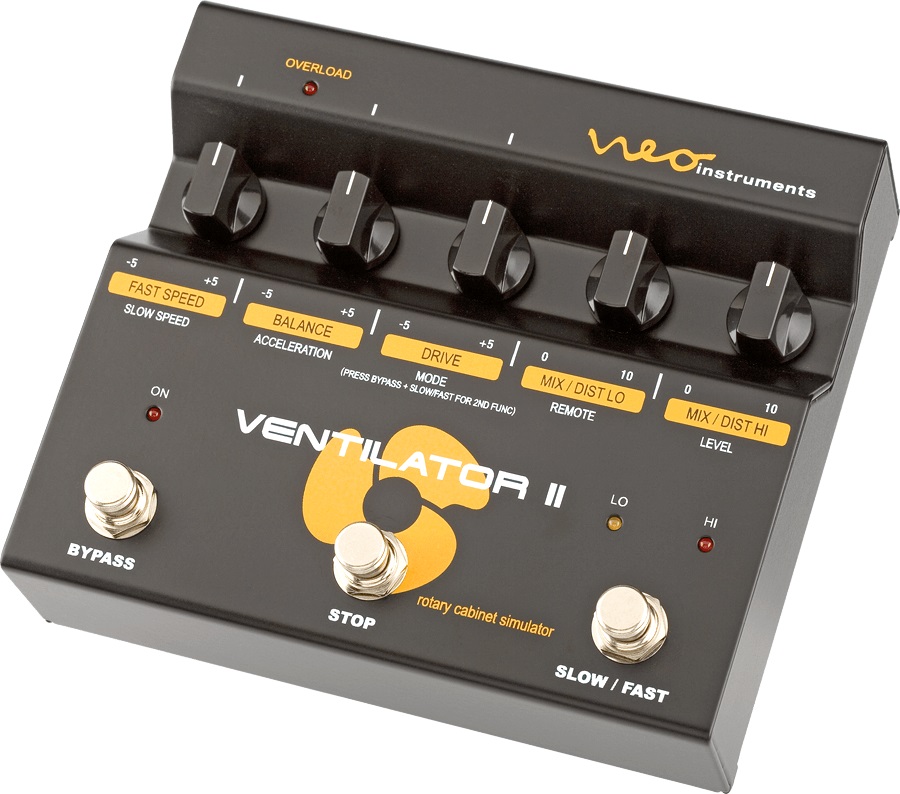
The importance of a rotary speaker simulator pedal lies in its ability to recreate the unique sound of a mechanical rotary speaker without the need for a large, cumbersome speaker cabinet.
Rotary speaker cabinets were initially designed to enhance the sound of organs and create a unique, swirling effect that added motion and depth to the music.
However, they were large and heavy, making them difficult to transport and set up for live performances.
Rotary speaker simulator pedals offer guitarists and other musicians the opportunity to achieve a similar effect in a more compact and portable form, enabling them to easily create rich and complex soundscapes.
The history of the rotary speaker simulator pedal can be traced back to the invention of the rotary speaker itself.
The rotary speaker, also known as the Leslie speaker, was invented by Donald Leslie in the early 1940s.
Leslie’s design used a rotating drum and horn to create a unique, moving sound that added depth and dimension to the music.
Initially, these speakers were paired with organs, but guitarists soon discovered the potential of these speakers and started using them in their performances.
Over time, the size and weight of the rotary speaker cabinet became an issue, and engineers began developing more compact and portable alternatives.
The first rotary speaker simulator pedals began appearing in the 1970s and 1980s, offering a more portable and convenient way for musicians to achieve the classic rotary speaker sound.
These early pedals were relatively simple and focused on replicating the basic rotating effect.
However, as technology advanced, the rotary speaker simulator pedals became more sophisticated, offering more accurate emulations of the rotary speaker cabinet and a wider range of tonal options.
Top 3 rotary speaker simulator pedal pedals:
Neo Instruments Ventilator II:
This pedal is considered one of the best rotary speaker simulators.
It provides an incredibly accurate emulation of the classic Leslie 122 rotary speaker, with separate controls for the fast and slow speed settings and adjustments for the acceleration and deceleration of the spinning drum and horn.
In addition, its high-quality construction and attention to detail make it a favorite among professional musicians.
Strymon Lex:
The Strymon Lex is another top-tier rotary speaker simulator pedal, offering a range of controls that allow users to fine-tune the sound to their liking.
This pedal is known for its rich, warm tone and the precise ability to recreate the classic rotary speaker sound.
It also features a built-in preamp to add warmth and color to the signal, making it a versatile and powerful tool for musicians.
Electro-Harmonix Lester G:
The Lester G by Electro-Harmonix is a more affordable option that still delivers a great rotary speaker simulation.
It features a comprehensive set of controls, including separate speed settings for the drum and horn, as well as a built-in compressor to help control the dynamics of the effect.
Its sturdy construction and user-friendly interface make it an excellent choice for guitarists on a budget.
Compatibilities with other effects pedals:
Regarding compatibility with other pedals, rotary speaker simulator pedals can generally be used with various other effects.
However, it’s essential to consider the placement of the rotary speaker simulator pedal in the signal chain.
For example, placing the rotary speaker simulator before other effects, such as distortion or overdrive pedals, can produce a more natural and organic sound, as the effect is applied to the dry signal before the other pedals process.
On the other hand, placing the rotary speaker simulator after other effects can result in a more dramatic and dynamic effect, as the swirling tones are applied to the processed signal.
Another factor to consider is the output level of the rotary speaker simulator pedal.
These pedals typically have a higher output level than other effects, as they are designed to simulate the power and volume of a traditional rotary speaker cabinet.
As a result, adjusting the input gain or output level of other pedals in the signal chain may be necessary to avoid clipping or distortion.
Regarding specific compatibility, some rotary speaker simulator pedals may feature built-in stereo outputs, which can be useful for creating a more immersive and spacious sound.
In addition, these pedals can be paired with other stereo effects, such as delay or reverb, to create complex and layered soundscapes.
Ultimately, the compatibility of a rotary speaker simulator pedal will depend on the specific pedal and other effects in the signal chain.
Therefore, it’s essential to experiment with different pedal configurations and settings to find the best combination for your unique sound.
20. Harmonizer Pedal
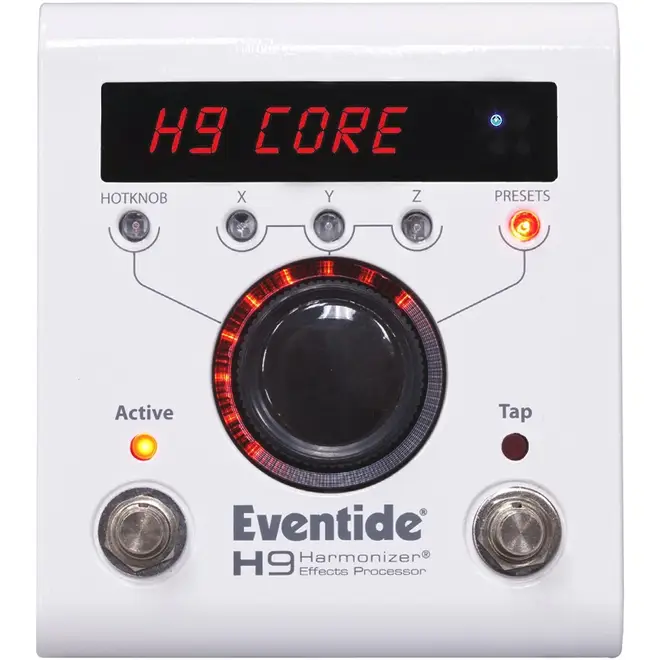
A harmonizer pedal is a guitar effects pedal used to create harmonies by generating additional pitches and tones to the original note being played.
It detects the input signal’s pitch and generates a new pitch higher or lower than the original note.
A harmonizer pedal is important because it allows guitarists to create rich, layered sounds that make they’re playing more interesting and dynamic.
In addition, Harmonizer pedals can create various effects, from subtle doubling and harmony lines to full-blown choral textures.
The history of the harmonizer pedal can be traced back to the late 1970s when Eventide released the H910 Harmonizer, one of the first digital pitch-shifting devices.
Since then, numerous manufacturers have released versions of the harmonizer pedal, with advancements in technology allowing for greater accuracy and versatility.
Top 3 harmonizer pedals:
Eventide H9:
The Eventide H9 is a versatile multi-effects pedal with various pitch-shifting algorithms, including a dedicated harmonizer mode.
In addition, it offers a wide range of control over the pitch-shifting parameters and the ability to save and recall presets.
TC Electronic Quintessence:
The TC Electronic Quintessence is a polyphonic harmonizer pedal that can generate up to four harmony voices.
It includes various modes, including a custom mode that allows users to create their harmonies.
Electro-Harmonix Pitch Fork:
The Electro-Harmonix Pitch Fork is a compact and affordable harmonizer pedal with pitch-shifting and harmonizing modes.
In addition, it features a range of different interval options and a blend control for adjusting the mix between the original signal and the harmonized signal.
Compatibilities with other effects pedals:
Harmonizer pedals are generally compatible with other guitar effects pedals.
However, some care may need to be taken to ensure that the harmonized signal is not affected by other pedals in the signal chain.
For example, some guitarists prefer harmonizer pedals with delay and reverb pedals to create lush, atmospheric textures.
In terms of compatibility with other pedals, it is important to consider the placement of the harmonizer pedal in the signal chain.
Some guitarists prefer to place the harmonizer pedal after distortion and overdrive pedals, while others prefer to place it before modulation effects like chorus and flanger pedals.
Experimenting with different signal chain configurations can help to achieve the desired sound.
What is a guitar effects pedal?
A guitar effects pedal is an electronic device that modifies the sound of a guitar, allowing the player to create a wide range of different sounds and tones.
These pedals can add distortion, delay, reverb, chorus, phaser, flanger, tremolo, wah, and many other effects to the guitar signal, giving musicians an almost limitless sound palette.
Effects pedals can be analog or digital and are typically housed in a small, compact box connected to the guitar and amplifier using patch cables.
Once connected, the guitarist can manipulate the settings on the pedal to achieve the desired sound.
One of the most popular types of effects pedal is the distortion pedal, which creates a distorted, overdriven sound similar to a tube amplifier.
This effect is achieved by amplifying the guitar signal and clipping the waveform’s peaks, resulting in a distorted sound.
Overdrive pedals, similar to distortion pedals but typically producing a subtler, more natural-sounding distortion, are also very popular.
Another popular effect is a delay, which creates an echo effect by repeating the original guitar signal at a set interval.
This effect can create a wide range of sounds, from subtle slapback echoes to cascading, multi-layered soundscapes.
Reverb is another commonly used effect that simulates a room’s natural reverberation or other space.
This effect can add depth and space to a guitar sound, making it more “alive” and “realistic.” Chorus, phaser, and flanger effects all work by splitting the guitar signal and altering the phase of one of the signals.
The chorus creates a thick, swirling sound by doubling the guitar signal and slightly delaying one of the signals.
Phaser creates a sweeping, swirling sound by altering the phase of one of the signals, and a flanger produces a similar sound to a phaser but with a more dramatic, jet-like effect.
Tremolo effects create a rhythmic, pulsating effect by varying the guitar signal’s volume at a fixed rate.
This effect can create everything from subtle, shimmering sounds to choppy, staccato effects.
Wah effects are the most iconic of all guitar effects pedals and are often used to create a vocal-like sound by altering the frequency response of the guitar signal.
This effect is achieved by sweeping a bandpass filter up and down the frequency range of the guitar signal, creating a “wah” sound.
Other popular effects pedals include octave pedals, which produce a sound one or two octaves higher or lower than the original guitar signal:
- Compressor pedals: which even out the volume of the guitar signal by compressing the dynamic range;
- Booster pedals: which increase the volume of the guitar signal without adding any distortion;
- EQ pedals: These allow the guitarist to adjust the frequency response of the guitar signal to emphasize or de-emphasize certain frequencies; and
- Looper pedals: allow the guitarist to record and loop a section of their playing, creating layered, multi-part arrangements.
In recent years, multi-effects pedals have become increasingly popular.
These pedals combine different guitar effects into one unit, allowing the musician to switch between them and create complex, layered sounds.
Multi-effects pedals often include a wide range of different effects, including distortion, delay, reverb, chorus, phaser, flanger, tremolo, wah, octave, and many others, as well as amp and cabinet simulations, built-in tuners, and other useful features.
How do you choose the right guitar effects pedal for your playing style?
Choosing the right guitar effects pedal can be daunting, especially for beginners or those unfamiliar with the wide variety of pedals available.
There are many factors to consider when choosing a pedal, including the type of effect, the quality of the pedal, and the compatibility with your guitar and amplifier.
Here are some tips to help you choose the right guitar effects pedal for your playing style.
– Determine your playing style.
Before you start shopping for guitar effects pedals, it’s important to determine your playing style.
For example, are you a blues guitarist who loves to play with much distortion?
On the other hand, are you a metal guitarist who needs a lot of sustain and heavy distortion?
Or are you a jazz guitarist who needs a subtle, clean sound with a touch of reverb or chorus?
Once you have determined your playing style, you can look for pedals that will complement your style and help you achieve the desired sound.
– Research different types of pedals
Different guitar effects pedals are available, each with a unique sound and function.
Therefore, it’s important to research the different types of pedals and determine which ones will work best for your playing style.
Some of the most common types of pedals include distortion, overdrive, delay, reverb, chorus, phaser, flanger, tremolo, wah, and octave.
Each of these pedals produces a different sound and has its unique characteristics.
– Consider the quality of the pedal.
When choosing a guitar effects pedal, it’s important to consider the quality of the pedal.
High-quality pedals are generally more reliable and produce a better sound than cheaper pedals.
Look for pedals from reputable manufacturers, such as Boss, Electro-Harmonix, TC Electronic, Strymon, and Line 6.
These manufacturers have a reputation for producing reliable pedals that produce great sound.
– Check the compatibility with your guitar and amplifier.
Before purchasing a guitar effects pedal, it’s important to check its compatibility with your guitar and amplifier.
Some pedals may not work well with certain guitars or amplifiers or require additional equipment to function properly.
Read the product specifications carefully and check with the manufacturer or a knowledgeable salesperson if you have any questions.
– Try out different pedals.
Finally, trying out different pedals before making a purchase is important.
Most music stores have demo pedals available for customers to try, so take advantage of this and experiment with different pedals to find the one that works best for your playing style.
Also, remember that the sound of a pedal can vary depending on the guitar and amplifier used, so be sure to try out the pedal with your equipment if possible.
What is a multi-effects pedal?
A multi-effects pedal is a guitar effects unit that combines several different effects into one unit, allowing guitarists to access a wide range of sounds without using multiple individual pedals.
Multi-effects pedals are popular among guitarists because they offer a convenient and cost-effective way to achieve various sounds.
Multi-effects pedals can include various effects, including distortion, overdrive, delay, reverb, chorus, phaser, flanger, tremolo, wah, octave, and many others.
Some multi-effects pedals include amp and cabinet simulations, built-in tuners, and other useful features.
One of the biggest advantages of multi-effects pedals is their versatility.
With a single unit, guitarists can access a wide range of different effects, making it easy to switch between sounds and experiment with different styles and genres of music.
This can be especially useful for gigging musicians, who may need to quickly switch between different sounds and effects during a performance.
Multi-effects pedals can also be a cost-effective alternative to buying individual pedals.
While individual pedals can be expensive, a good quality multi-effects pedal can offer a wide range of different effects at a more affordable price.
This can be especially useful for beginners who may not want to invest in multiple pedals immediately.
Another advantage of multi-effects pedals is their convenience.
With a single unit, guitarists can easily transport their effects to gigs, rehearsals, or recording sessions without lugging around a large pedalboard.
This can be especially useful for musicians constantly on the go, as it allows them to access a wide range of sounds without carrying heavy equipment.
However, a few things to remember when using a multi-effects pedal.
First, it’s important to familiarize yourself with the different effects and how they work.
While multi-effects pedals can be convenient, they can also be complex, and it’s important to understand how each effect works and how to adjust its settings to achieve the desired sound.
It’s also important to remember that multi-effects pedals may not always sound as good as individual pedals.
While some multi-effects pedals can produce high-quality sounds, others may not offer the same clarity or nuance as individual pedals.
This can be especially noticeable with more complex effects, such as reverb or delay, which can be difficult to replicate accurately in a multi-effects pedal.
What are some popular brands of guitar effects pedals?
There are many brands of guitar effects pedals available on the market, each with its unique characteristics and sound.
Here are some of the most popular brands of guitar effects pedals:
Boss:
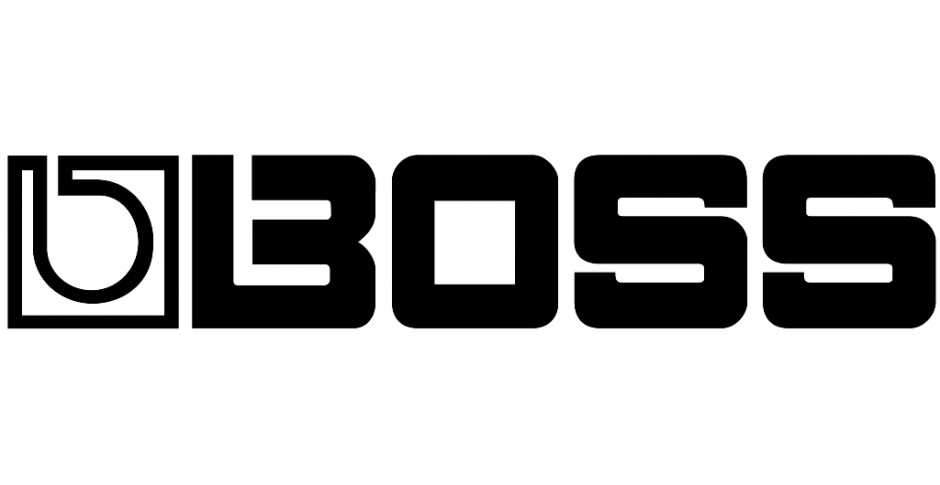
Boss is one of the most well-known and respected brands of guitar effects pedals.
They produce various pedals, from distortion and overdrive to delay, reverb, chorus, and more.
Boss pedals are known for their durability, reliability, and consistent sound quality, making them popular among guitarists of all levels and styles.
Electro-Harmonix:
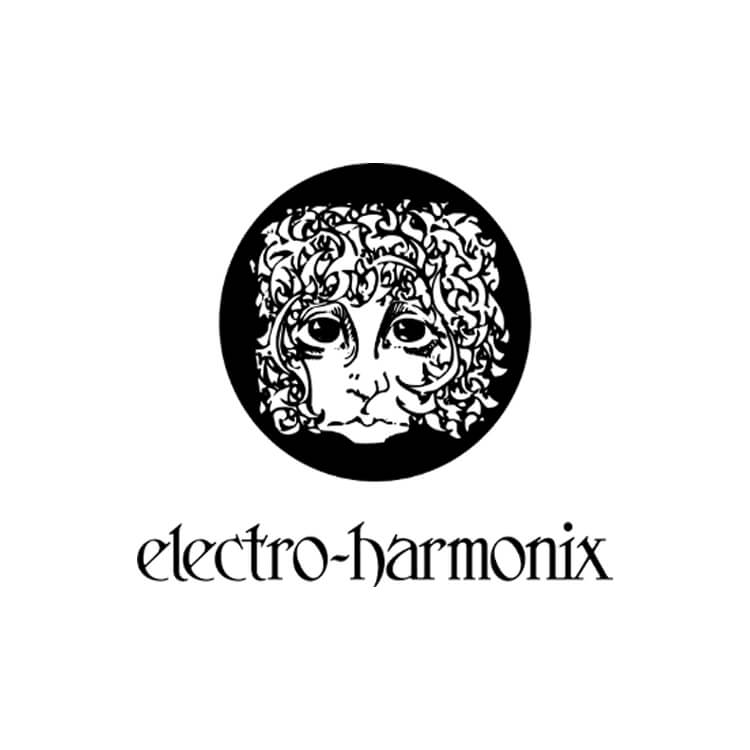
Electro-Harmonix is another popular brand of guitar effects pedals known for their innovative designs and unique sounds.
They produce various pedals, from the classic Big Muff distortion pedal to the more experimental POG octave pedal.
Electro-Harmonix pedals are known for their quirky, unconventional sounds, making them popular among experimental and alternative guitarists.
– TC Electronic:

TC Electronic is a Danish company that produces high-quality guitar effects pedals, including distortion, delay, reverb, and chorus.
TC Electronic pedals are known for their innovative designs, advanced features, and high-quality sound, making them popular among professional guitarists.
– Strymon:

Strymon is a relatively new brand of guitar effects pedals, but it has quickly gained a reputation for producing some of the best-sounding pedals on the market.
They produce many pedals, including delay, reverb, chorus, phaser, etc.
Strymon pedals are known for their advanced features, intuitive controls, and exceptional sound quality.
– MXR:
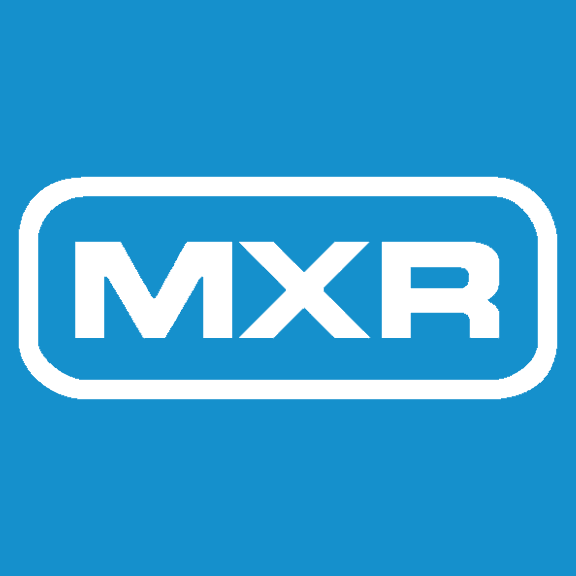
MXR is a brand of guitar effects pedals owned by Jim Dunlop, known for producing high-quality pedals with a classic sound.
They produce many pedals, including distortion, overdrive, delay, reverb, etc.
MXR pedals are known for their simplicity, durability, and classic sound, making them popular among rock and blues guitarists.
– Line 6:
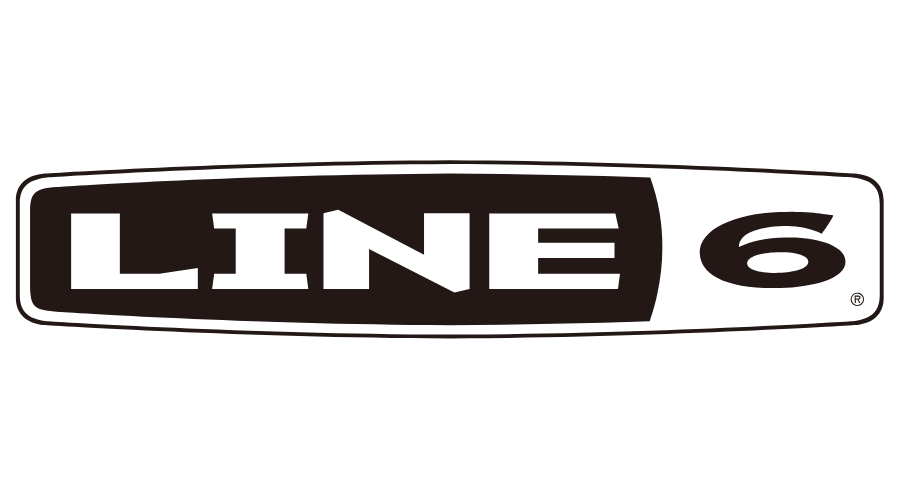
Line 6 is a brand of guitar effects pedals that produce a wide range of multi-effects pedals, amp and cabinet simulations, and other guitar-related gear.
Line 6 pedals are known for their advanced features, high-quality sound, and versatility, making them popular among guitarists who want a wide range of effects in a single unit.
– Dunlop:
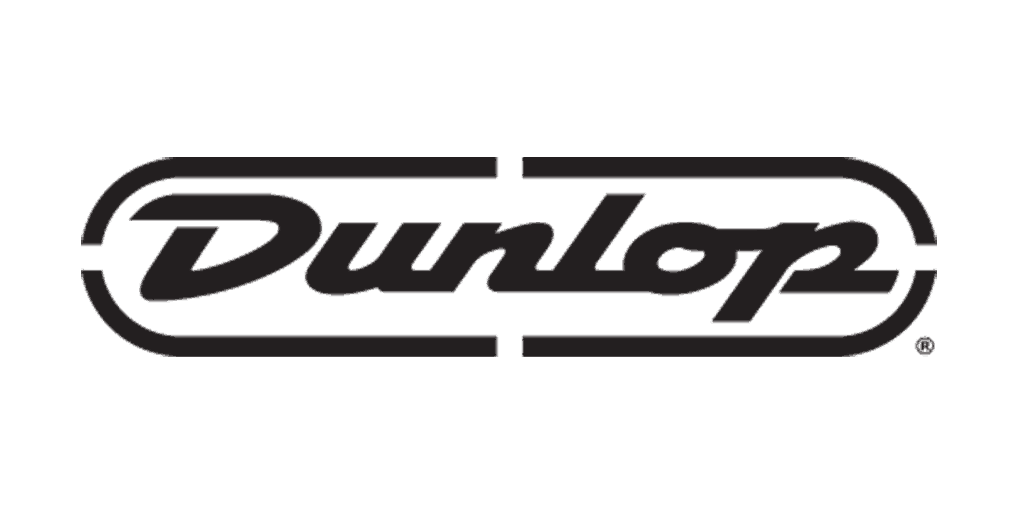
Dunlop is a company that produces a wide range of guitar-related gear, including guitar strings, picks, and effects pedals.
They produce a wide range of pedals, including the classic Cry Baby wah pedal and the MXR line of pedals.
Dunlop pedals are known for their high-quality sound and reliable performance, making them popular among guitarists of all levels and styles.
– Fulltone:
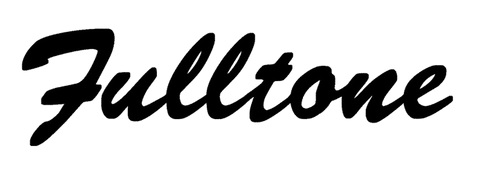
Fulltone is a boutique guitar effects brand that produces a small but high-quality range of pedals, including distortion, overdrive, delay, and more.
Fulltone pedals are known for their attention to detail, high-quality components, and exceptional sound quality, making them popular among professional guitarists.

– EarthQuaker Devices:
EarthQuaker Devices is a brand of guitar effects pedals known for their innovative designs and unique sounds.
They produce various pedals, from distortion and overdrive to delay, reverb, and more.
EarthQuaker Devices pedals are known for their creative sound design and unique features, making them popular among experimental and alternative guitarists.
In love with guitars, and gear; expert in all things music! Been writing about guitars for about 5 years and counting. Born in the ’90s. Alma Mater: University of Havana. Always curious, trying to understand the world. #TeamFender

